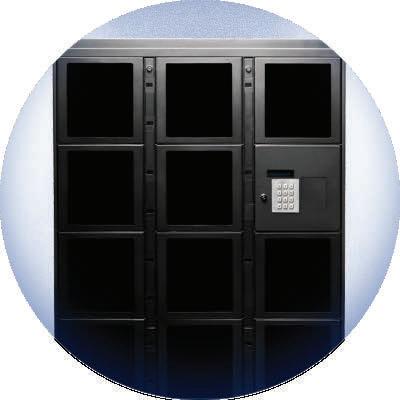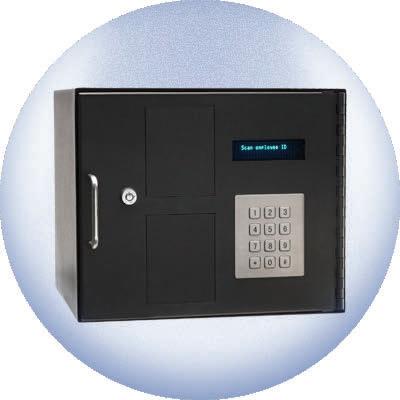











































This EMS Week, we recognize the commitment, skill, and compassion of EMS professionals across Wisconsin and beyond. The 2025 theme, "We Care. For Everyone," reflects what EMS has always stood for—providing care without hesitation, without barriers, and without judgment.
For over 50 years, EMS providers have been the steady hands in moments of crisis, the calm voices in the chaos, and the unwavering support for those in need. Whether responding to an emergency, educating the next generation, or advocating for better systems of care, EMS professionals show up for everyone—no matter the circumstance, no matter the challenge.

As we honor the past and look toward the future, we extend our deepest gratitude to those who dedicate their lives to serving others. Your work saves lives, strengthens communities, and reminds us all what it truly means to care.
OFFICERS AND BOARD OF DIRECTORS
President Tony Lash, Paramedic, Union Grove, WI
To all EMS professionals across Wisconsin and beyond, thank you for your service, your sacrifice, and your dedication to the noble cause of saving lives.
Vice President Stacey Zellmer, AEMT, Tomah, WI
Treasurer Jay Young, EMT, Bloomer, WI
Secretary Adam Robarge,

EMS Professionals® is published quarterly by Craig Kelman & Associates Ltd. on behalf of the Wisconsin EMS Association. Distribution restricted to Wisconsin EMS Association members, Wisconsin licensed ambulance providers, Wisconsin-based hospital emergency departments and Wisconsin Legislators. Reasonable care will be taken in handling, but the Wisconsin EMS Association assumes no responsibility for material submitted. The post office will not forward third class mail. All rights reserved. Contents may not be reproduced without express consent of the publisher. ©2025
Send address changes to:
Wisconsin EMS Association, 26422 Oakridge Drive, Wind Lake, WI 53185.
Deputy EMS Chief & Paramedic, Tomah, WI
Becky Smudde, EMT, Appleton, WI
Chanse Kaczmarski, Paramedic, Belleville, WI
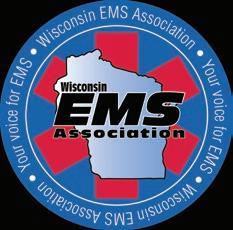
Jody Stoker, Fire Chief & AEMT, Black River Falls, WI
~ WEMSA Staff & Board
Delaney Weiler, Paramedic, Wisconsin Rapids, WI
Ryan Huser, Paramedic, Ripon, WI
Shaunna Bryant, Paramedic, Waushara, WI
Evelynn Dax, Paramedic, Eau Claire, WI
Wyatt Sachen, Paramedic, Black River Falls, WI
EDITORIAL AND ADVERTISING OFFICES
3rd Floor – 2020 Portage Avenue, Winnipeg, MB R3J 0K4
Tel: 866-985-9780 Fax: 866-985-9799 www.kelmanonline.com
Managing Editor: Mathias Leiendecker
Marketing Manager: Jeff Kutny
Design/layout:
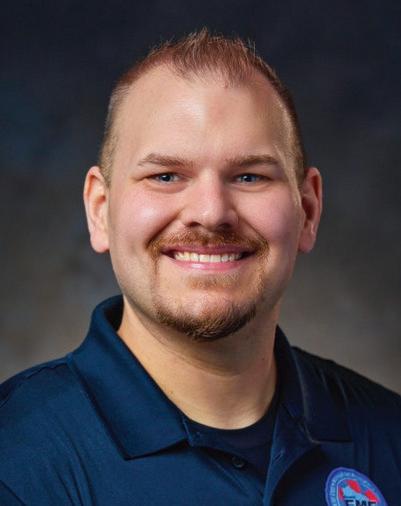
Alan DeYoung, MHA, MS Executive Director, Wisconsin EMS Association

While the challenges of staffing shortages and adequate funding remain, there are signs of progress. Through visits with departments across the state, I’ve seen positions beginning to be filled, funding reaching local services, and perhaps most importantly, a renewed sense of optimism for the road ahead. I recognize this isn’t yet the case for every region and that many continue to
face very real struggles. But together, we are making headway.
In this message, I want to touch on a few key developments that deserve your attention. Despite ongoing uncertainties, especially at the federal level, our responsibilities in EMS don’t slow down. Now more than ever, we must understand what’s at stake for the long-term sustainability of our field, of our association, and the work being done behind the scenes to secure our future.
The future of your collective voice in EMS is at a crossroads. WEMSA’s overall membership has remained relatively stable over the years, but as service consolidation continues, we’ve seen the start of a decline. As a nonprofit organization, even modest revenue shifts can have significant consequences.
We’ve only increased membership rates once in nearly a decade, maintaining a department membership
model that allows organizations to choose how many individuals receive member benefits. While this flexibility helps with budgeting, it has also created confusion, especially during event registration and benefit access, and complicates our ability to accurately reflect the strength of our statewide advocacy voice.
For example, a department with 40+ EMS professionals might hold a Level 1 Membership with only 10 individuals. While we estimate that our represented membership could reflect more than 9,000 to 10,000 EMS professionals based on complete department rosters, our current membership count is just over 6,000.
We understand the financial pressures departments face. That’s why we’ve built our membership model around providing tangible value, cost savings on equipment, meaningful advocacy wins, and access to educational opportunities. But to remain viable and continue delivering these benefits, we must evolve.
In the coming year, WEMSA will transition to a new membership model based on call volume. This change will simplify membership enrollment and ensure every member of your department receives full access to WEMSA benefits under one flat rate.
It’s important to consider what’s at risk if EMS loses its unified voice. Without statewide advocacy, legislation could pass mandating additional responsibilities without corresponding funding. Public safety budgets could be reduced with little resistance. And yes, there are already external interests eager to see local EMS departments shutter in favor of alternative models. I implore you to review our 2025 “WHO IS WEMSA?” Membership Report, included in this issue of EMS Professionals©. This Membership Report helps to focus our initiatives, projects, and advocacy efforts around our membership, not just the voice of the few.
We’re committed to communicating these changes well in advance so your department can plan accordingly. One
“The future of EMS in Wisconsin depends on the choices we make today. With support, collaboration, and shared vision, I believe we can continue to make meaningful progress on behalf of our departments and the communities we serve.”
of the ways we’ll do this is through our Monthly Membership Forums.
By the time you read this, we will have hosted our first Monthly Membership Forum. These sessions, offered both in the morning and evening to accommodate different schedules, will serve as regular updates for WEMSA members, covering topics related to membership, education, and advocacy. They are intended to create a consistent, open line of communication between your department and WEMSA leadership. We encourage you to participate and stay engaged with the issues shaping our profession.
In recent updates, I’ve shared information about our HazMat for EMS training program, funded through a federal grant. These in-person workshops, hosted across the state and at our annual WEMSA Conference, were designed to address critical training gaps in hazardous material response.
I’m pleased to share that this workshop is now available on-demand through our WEMSA Learning Portal. The feedback we’ve received has been overwhelmingly positive, noting both the depth of information and the engaging delivery format. If you haven’t yet explored this training, I highly recommend it.
Funding has always been a cornerstone issue for EMS agencies. This year marks a historic shift: for the first time, the Wisconsin EMS Funding Assistance
Program (FAP) distributed $25 million to both transport and non-transport EMS departments.
Departments that previously received between $6,000 and $8,000 in annual funding saw their awards increase significantly, on average receiving upwards of $50,000. Nearly 500 departments across the state benefited from this program.
WEMSA was instrumental in both the creation of the FAP program in 1989 (Wisconsin Act 102) and in advocating for its recent expansion during the last legislative session, from the original $2.2 million annually to $25 million, and with the inclusion of non-transport departments for the first time.
This funding is now expected to continue annually, but sustaining it will require ongoing advocacy. It will take a strong, united voice to ensure it’s never scaled back or removed.
The future of EMS in Wisconsin depends on the choices we make today. With support, collaboration, and shared vision, I believe we can continue to make meaningful progress on behalf of our departments and the communities we serve.
Our team at WEMSA is deeply committed to this work. We believe in the mission of EMS and in ensuring that every community, no matter how large or small, has access to professional, 24/7 emergency medical care. That care needs to serve our local communities and needs to be driven by local communities.
We hope you’ll continue to stand with us as we take these next steps forward.
WEMSA Membership consists primarily of Firebased EMS (46%) and Governmental, Non-Fire (29%) (districts, counties, stand-alone EMS services), and Private Non-Hospital (21%). Of the Private Non-Hospital services, over 80% are non-profit organizations.
WEMSA Membership consists primarily of Firebased EMS (46%) and Governmental, Non-Fire (29%) (districts, counties, stand-alone EMS services), and Private Non-Hospital (21%). Of the Private Non-Hospital services, over 80% are non-profit organizations.
Over 75% are municipal-based EMS.
Over 75% are municipal-based EMS.
Over 93% are either governmental or non-profit organizations.
Over 93% are either governmental or non-profit organizations.
WEMSA Membership consists primarily of Combination, Pain on Call (48%) (some full-time, some part-time, some volunteers) services and Volunteer (28%) services.
WEMSA Membership consists primarily of Combination, Pain on Call (48%) (some full-time, some part-time, some volunteers) services and Volunteer (28%) services.
Over 76% utilize volunteers to staff their service.
Over 76% utilize volunteers to staff their service.
WEMSA Membership consists primarily of Paramedic Level (34%) services and Emergency Medical Technician (25%) services. Advanced Emergency Medical Technician (AEMT) services make up 20% of membership as well.
WEMSA Membership consists primarily of Paramedic Level (34%) services and Emergency Medical Technician (25%) services. Advanced Emergency Medical Technician (AEMT) services make up 20% of membership as well.
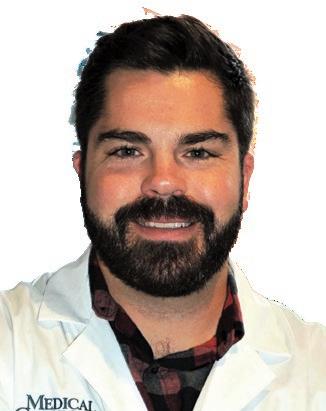

Thomas W Engel III, MD, MPH and Ben Weston, MD, MPH, FAEMS
Blood products have become increasingly integrated into the prehospital environment to treat hemorrhagic shock in both military and civilian settings. As with implementations of new practices and procedures, variability exists in both the indications for blood products and the actual blood product administered.1 Understanding the practices of agencies who have reported the implementation of blood products can aid in developing industry standard indications and methodologies and guide those looking to advance practice in their own community.
While far from ubiquitous, blood transfusion has become more common in United States prehospital agencies. The Prehospital Blood Transfusion Initiative Coalition, led by a group of "prehospital and hospital-based medical professionals, as well as industry, blood collection, and government partners" tracks both statelevel scope of practice changes to allow prehospital blood as well as agencies that have implemented blood in their system.2 Though continuously updated, at the time of this writing, 38 states allow blood in their scope of practice, one state has limited allowance (California) and 11 states do not permit prehospital blood. Meanwhile, at the time of this writing, they


have tracked 229 prehospital agencies that have implemented blood. Among those agencies, the most common type is fire-based (93 departments), followed by third service (88 systems), and hospitalbased (19 hospitals).
There is well-documented evidence of both morbidity and mortality benefits of prehospital blood initiation that increases with the severity of illness and increased time from definitive treatment. Among medically evacuated US military combat casualties in Afghanistan, prehospital transfusion was associated with greater 24-hour and 30-day survival.3 In civilian prehospital patients with gastrointestinal bleeding transported by helicopter, prehospital transfusion improved hemodynamic instability, coagulopathy, and anemia.4 A review of four years of data from two level 1 trauma centers demonstrated prehospital whole blood initiation was associated with a
greater improvement in shock index and a reduction in massive transfusion protocol initiation in the hospital.5 Finally, a ground-based EMS regional whole blood program has noted improved patient hemodynamics and survival outcomes over a three-year program implementation.6
Despite the sizable number of agencies in the United States administering prehospital blood, those that have published their practices are limited. A recent scoping review evaluated literature to determine blood products used, indications for administration, adverse reactions recorded, and logistical challenges reported in prehospital blood administration.7 After screening online databases CINAHL, Medline, and Scopus, 20 articles were included in the scoping review. Seven of the studies were from the United States, one from the US and
Canada, five from Europe, three from Israel, and two from Australia. Overall, the most commonly used prehospital blood product was packed red blood cells; however, there is a consistent increase in programs incorporating whole blood as the primary means of resuscitation with some European colleagues utilizing freeze-dried plasma given its shelf stability. The most common prehospital presentation for blood initiation is in the setting of traumatic hemorrhagic shock with slightly less than half allowing for the use of blood products in medical hemorrhagic shock patients to include gastrointestinal bleeding and vaginal bleeding. A majority of research identifies indications for initiation of blood products as basic vital signs evidence of hemodynamic instability. Some systems incorporate end-tidal CO2, prehospital ultrasound, and the use of standardized scoring systems to initiate blood products. Most programs initiating prehospital blood products include the use of tranexamic acid in the setting of trauma patients or postpartum hemorrhage care to improve clot stability. Some systems are instituting early calcium administration to combat transfusion-related hypocalcemia and the detrimental hemodynamic effects of hypocalcemia, but there is a lack of consensus on the optimal timing and type of calcium supplementation. Complications of prehospital blood transfusion are documented at exceeding rare occurrences. There is consistency in the storage, monitoring, and documentation of prehospital blood products with solid evidence of logistical success in prehospital blood program management and maintenance. Finally, blood product waste is rare but most commonly occurs due to human error in product usage or storage temperature maintenance.
Incorporation of blood into prehospital systems of care can be a challenging endeavor with multiple stakeholders requiring engagement and logistical issues to consider. Hospital systems including trauma and emergency
leadership, as well as blood bank management, must be involved early to allow for partner buy-in and avoid latestage barriers to program implementation. Working with receiving hospitals can potentially improve financial barriers through inclusion into patient hospital billing for blood product costs.8 Logistics of blood distribution must be considered, including whether it will be a regional resource dispatched to scenes likely to require blood or placement on an ambulance or other response vehicle without the need for modifications in dispatch. To maximize blood availability, a comprehensive system including dispatch modification, regional response, and resource sharing among departments is advised. Guidelines must be developed not only for clinical considerations such as indications, administration protocols, and monitoring procedures, but also for the broader logistics of blood distribution, storage, product and temperature monitoring, and product exchange. Careful attention must be paid to supply management and temperature monitoring. This will ensure minimal wastage of high-value blood products. As with any program, education and quality assurance program development is key to success.
The use of prehospital blood products has well-documented evidence in morbidity and mortality for multiple populations experiencing hemorrhagic shock. Current literature has identified that prehospital systems have the logistical capabilities to manage a blood program. It is critical to recognize that program initiation and maintenance is complex and requires significant partnership amongst multiple levels of patient care. Given the nature of this complexity, strong inclusion of medical direction in programmatic design is critical. Future research will require more systems to report on their successes and challenges in this environment, clarification on appropriate blood product type and initiation guidelines, and the appropriate timing of adjunctive therapies.
1. Levy MJ, Garfinkel EM, May R, et al. Implementation of a prehospital whole blood program: Lessons learned. J Am Coll Emerg Physicians Open. 2024;5(2):e13142. doi:10.1002/emp2.13142
2. Prehospital Blood Transfusion Coalition. Accessed April 1, 2025. https://prehospitaltransfusion.org/
3. Shackelford SA, Del Junco DJ, Powell-Dunford N, et al. Association of Prehospital Blood Product Transfusion During Medical Evacuation of Combat Casualties in Afghanistan With Acute and 30-Day Survival. JAMA. 2017;318(16):15811591. doi:10.1001/jama.2017.15097
4. Parker ME, Khasawneh MA, Thiels CA, et al. Prehospital Transfusion for Gastrointestinal Bleeding Air Med J. 2017;36(6):315-319. doi:10.1016/j.amj.2017.06.002
5. Braverman MA, Schauer SG, Ciaraglia A, et al. The impact of prehospital whole blood on hemorrhaging trauma patients: A multi-center retrospective study. J Trauma Acute Care Surg. 2023;95(2):191-196. doi:10.1097/ TA.0000000000003908
6. Braverman MA, Smith AA, Ciaraglia AV, et al. The regional whole blood program in San Antonio, TX: A 3-year update on prehospital and in-hospital transfusion practices for traumatic and non-traumatic hemorrhage. Transfusion. 2022;62 Suppl 1:S80-S89. doi:10.1111/trf.16964
7. Turnbull C, Clegg L, Santhakumar A, Micalos PS. Blood Product Administration in the Prehospital Setting: A Scoping Review. Prehosp Emerg Care. Published online August 19, 2024:1-14. doi:10.1080/10 903127.2024.2386007
8. Schaefer RM, Bank EA, Krohmer JR, et al. Removing the barriers to prehospital blood: A roadmap to success. J Trauma Acute Care Surg. 2024;97(2S Suppl 1):S138-S144. doi:10.1097/ TA.0000000000004378

Froedtert Hospital
Adult Emergency Department
Eastern Wisconsin’s only
Adult Level I Trauma Center
Froedtert Holy Family Memorial Hospital
Emergency Department
Level III Trauma Center
Froedtert Menomonee Falls Hospital
Emergency Department
Level III Trauma Center
Froedtert Pleasant Prairie Hospital
Emergency Department
Level III Trauma Center
Froedtert West Bend Hospital
Emergency Department
Level IV Trauma Center
Froedtert Community Hospital
Emergency Departments
• Mequon • Oak Creek
• New Berlin • Pewaukee
Contact Us
We are proud to serve as your partner for emergency medical care and treatment of traumatic injuries. Thank you for all you do! Let’s push ahead.
To reach one of our EMS liaisons, visit froedtert.com/ems.
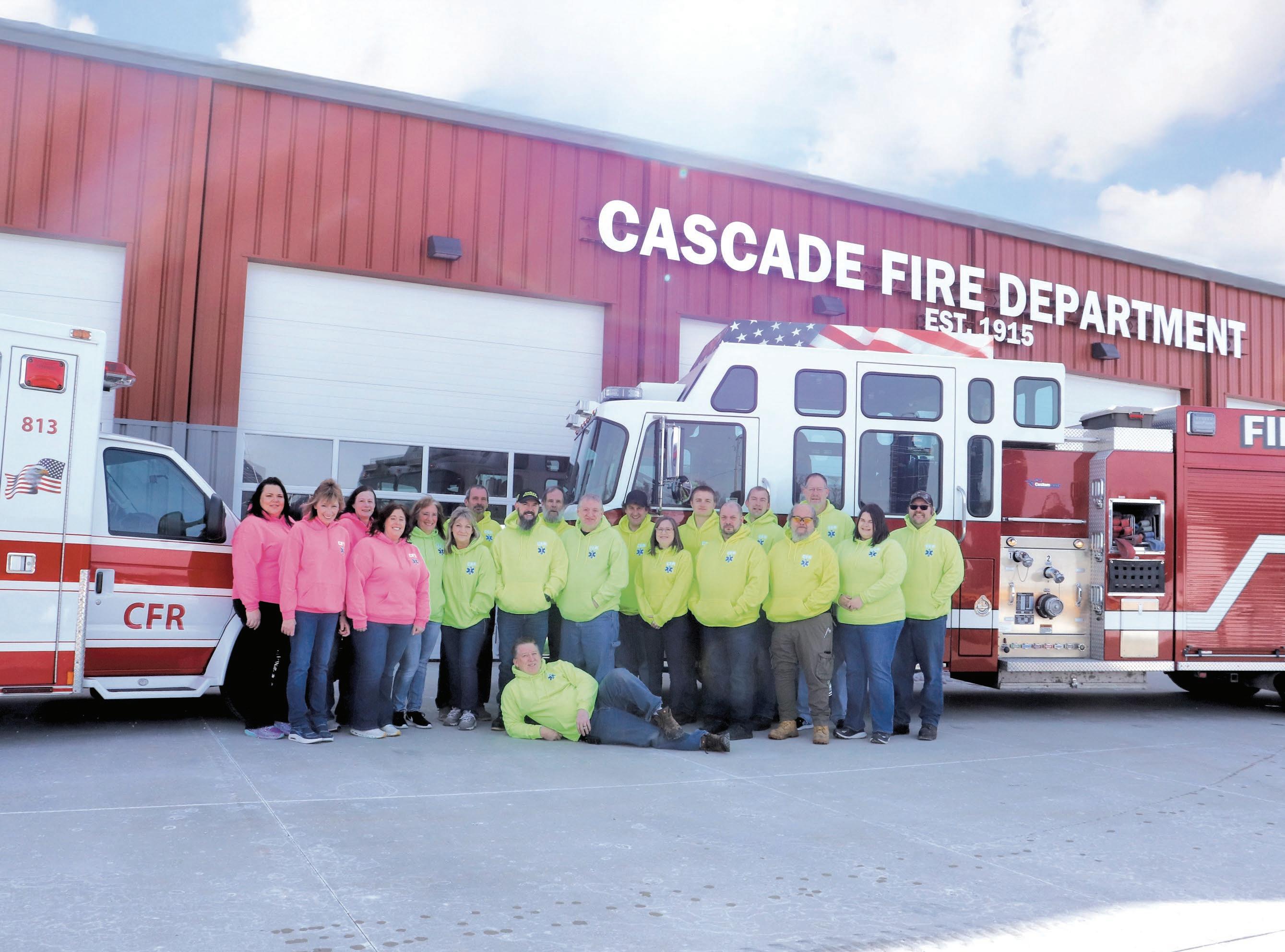
Q: WHAT CAN YOU TELL US ABOUT YOUR SERVICE RESPONSE AREA AND CALL VOLUME?
A: The Cascade First Responders, based in Southwestern Sheboygan County, serves the Village of Cascade, the Town of Lyndon, and the Town of Mitchell. Our total service area is just over 70 square miles, serving over 3,500 residents, and consisting of farms and bountiful farmlands, rural communities, state roads, woods, lakes, streams, rivers, hiking trails, and cozy communities. Our average call volume is around 125 calls per year, not including MABAS calls or support calls to serve the Cascade Fire Department.
Q: WHAT LEVEL OF CARE DO YOU PROVIDE, AND HOW ARE YOU STAFFED?
A: Each member of the Cascade First Responders is a volunteer and licensed at an EMR level with the State of Wisconsin. Several members have pursued careers and currently work in the medical field. We're fortunate to have more than a dozen CPR-certified police officers, firefighters, and support volunteers who can respond to Echo-level calls to provide additional support.
Q: HOW MANY STATIONS AND APPARATUS DOES YOUR SERVICE HAVE?
A: The Cascade First Responders formally operate out of the Cascade Fire Department's new station, completed and fully operational in 2020. We have one ambulance, which is used primarily for responding to MVAs, MABAS calls, and calls that occur during extreme weather. Each EMR has its own AED, O2 tank, and fully stocked jump bag to respond directly to the scene from their personal vehicles, which helps to ensure prompt response time to serve our wide service area.
Q: TELL US SOMETHING UNIQUE ABOUT YOUR SERVICE AND RESPONSE AREA.
A: Our service area is roughly an hour north of Milwaukee and an hour south of Green Bay, so having close big city amenities yet having a rural and quiet existence is quite special. We have a solid balance between rural and small-town living and a sportsperson and outdoor enthusiast's dream with miles and miles of hiking and biking trails, state land, and waterways. That means we have to be ready for any call – from an agriculture, a high-impact MVA, or an injured hiker.
Q: TELL US ABOUT ANY COMMUNITY PROGRAMS YOUR SERVICE IS INVOLVED IN.
A: Serving active communities, we offer our support and services several times annually for standby EMS at softball tournaments in the Village of Cascade and Town of Mitchell, the Cascade Fireman's Picnic, and 5k races and concerts at SoLu Winery.
Q: WHAT IS SOMETHING THAT YOU AND YOUR DEPARTMENT ARE MOST PROUD OF ABOUT YOUR SERVICE?
A: The membership of the Cascade First Responders totals approximately 275 years of service and experience in EMS. We have also gained nine members in the last four years, with five members in the last two years alone. We're grateful to have several members with over 25 years of experience who serve as outstanding mentors to our less-tenured members. On top of that, we believe we have an extremely engaged and close-knit team, which aids our service quality and trust between members.
Q: WHAT DO YOU FORESEE AS YOUR SERVICE'S MAIN CHALLENGES TO BE IN THE NEXT YEAR AND WHAT ARE YOUR PLANS TO ADDRESS THEM?
A: Like many departments, the rising cost of medical supplies and equipment to stock our EMRs jump bags, and rig is our primary concern and challenge. We intend to stay consistent and optimize our main fundraising events, including our fish boil
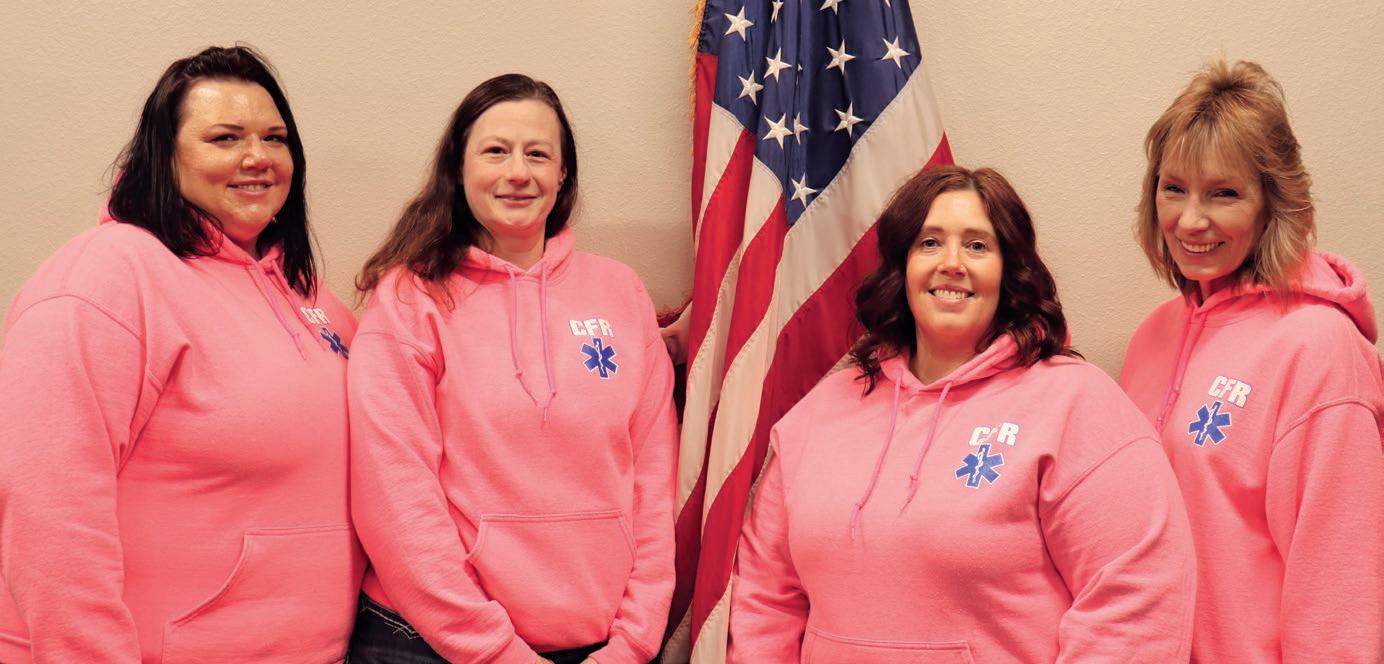
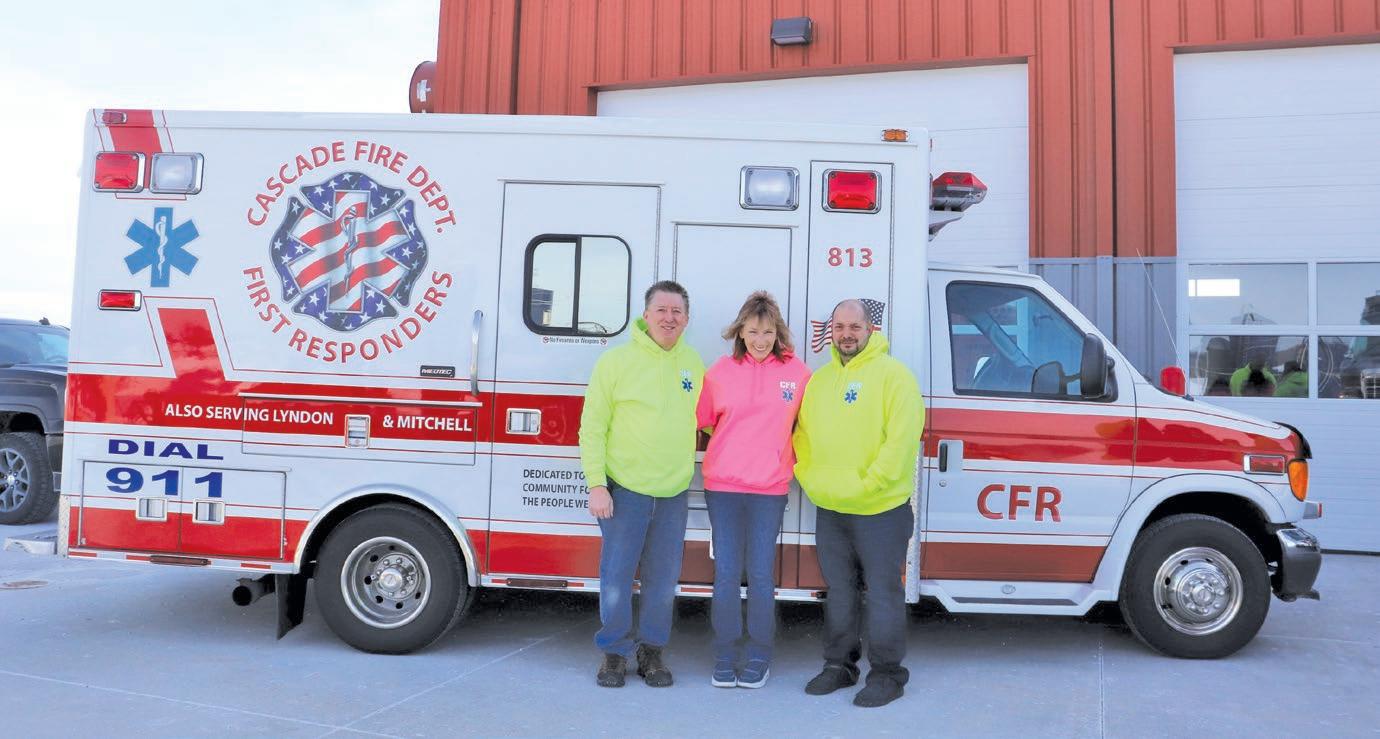
(April 4, 2025), all-you-can-eat breakfast (June 1, 2025), and meat raffle (October 2025), to reach our fundraising goals. At these events specifically, we're committed to doing a better job of educating our community members about the cost of our service so they understand why their donations and support are so critical.
Q: ANYTHING ELSE YOU WOULD LIKE TO TELL US ABOUT YOUR SERVICE OR ITS MEMBERS?
A: We could not be prouder of our members and their commitment to their communities. Several members of the Cascade First Responders double as members of the Cascade Fire Department – or are heavily involved in other local non-profit organizations. We have several husband-and-wife duos that are members of our team. We're incredibly proud to share that the Chief of the Cascade Fire Department, Todd Triebensee, and Cascade Police Chief,
Jason Liermann, are members of the Cascade First Responders. We're truly a heart-centered team that believes in bringing out the best in each other – and serving our communities with an open heart. Serving tight-knit communities, we're thankful to be there for our neighbors during acute, scary, and uncertain moments.
Q: WHY DID YOUR SERVICE CHOOSE TO BE A MEMBER OF WEMSA? WHAT BENEFIT DOES YOUR SERVICE VALUE MOST?
A: We're extremely thankful for the educational and networking opportunities that WEMSA brings to our team. We've formed relationships with area EMS teams and garnered incredible insight into how to become a stronger unit. We also appreciate the vendor relationships we have created and applicable grant opportunities, allowing us to discover opportunities to begin cutting down our medical supply overhead.
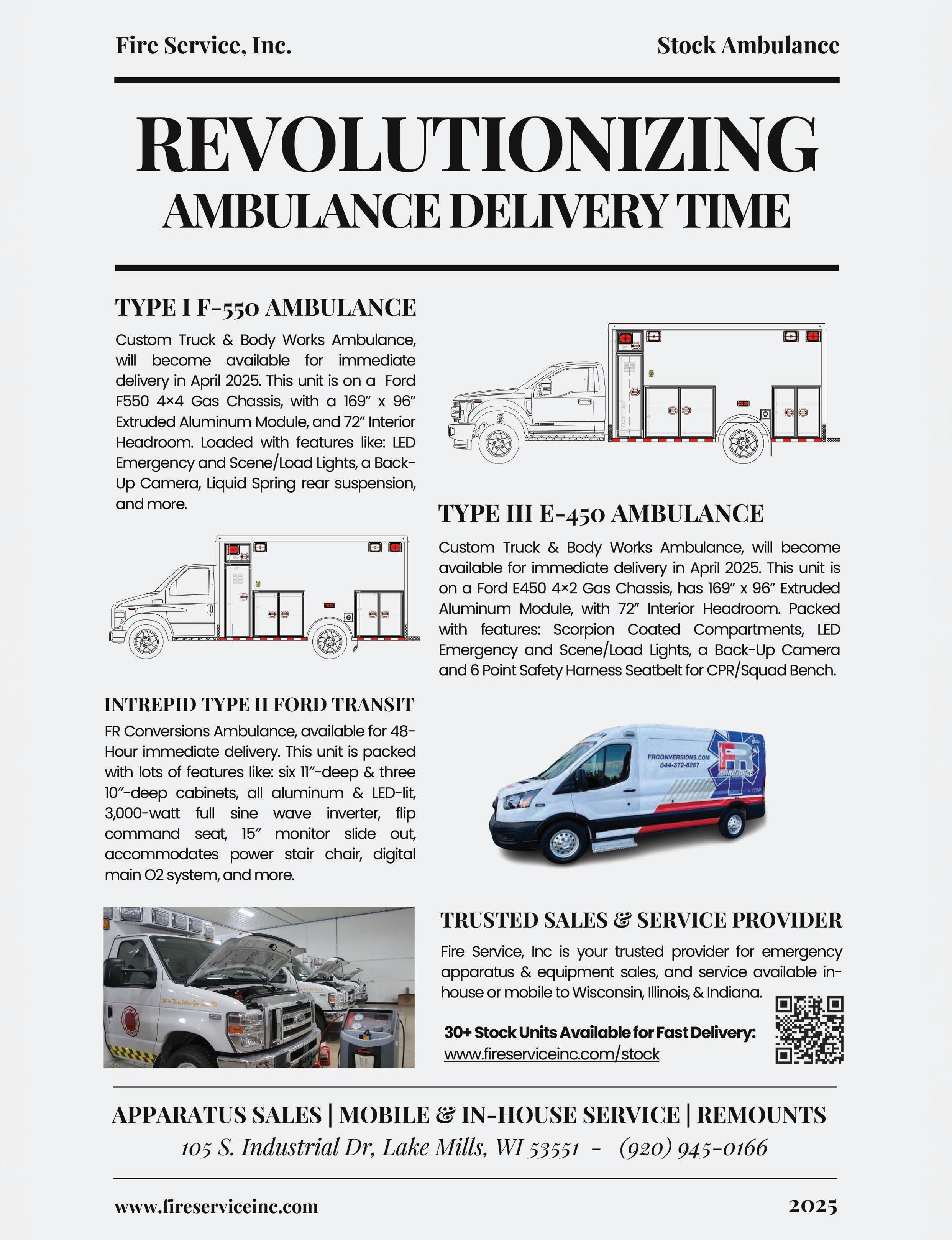

“On behalf of the entire Wisconsin EMS Association (WEMSA) Staff and Board –thank you. Whether you came for the workshops, the Expo Hall, the bingo, the lectures, or let’s be honest, the free pens, you helped make the 2025 WEMSA Conference one to remember.”

On behalf of the entire Wisconsin EMS Association (WEMSA) Staff and Board – thank you. Whether you came for the workshops, the Expo Hall, the bingo, the lectures, or let’s be honest, the free pens, you helped make the 2025 WEMSA Conference one to remember. The 2025 Conference brought together EMS professionals from across the region for an unforgettable event packed with education, networking, and industry innovation. Held for the third year at the Resch Expo in Green Bay, WI, this year’s conference continued WEMSA’s tradition of providing top-tier education and professional development opportunities for emergency medical providers of all levels.

This year, we had five tracks running for four full days. We offered dedicated BLS, ALS, and Management tracks, along with 13 workshops including K9 Point of Care, Hazmat for EMS, Mental Health First Aid for Fire/EMS, an Obstetric Emergencies Workshop, and Ultrasound for EMS. These hands-on sessions provided valuable, real-world applications that attendees took back to their departments.
“Wing It with WEMSA” kicked off the first night of the conference at D2 Sports Pub. This informal gathering allowed attendees and exhibitors to connect in a relaxed setting over food and drinks. It was a great opportunity to build relationships and share stories with EMS professionals from across the region.


Wednesday night featured the Exhibit Hall Opening Night! The Expo Hall Opening welcomed attendees for an exclusive first look at exhibitor displays and hands-on demonstrations. Participants explored new equipment, networked with vendors, and took advantage of the professional headshot photo booth. The Exhibit Hall at WEMSA 2025 brought together over 90 exhibitors. This year’s hall was more than just a showcase; it was an interactive space where attendees could engage with vendors, test new products, and discover solutions tailored to their needs.
This year, we brought back Expo Hall Education Mini Sessions, held during the lunch period, where attendees could learn quick tricks and tips about topics such as staying healthy as a first responder, cricothyrotomy, and scene response. In addition to hands-on learning, the Exhibit Hall also offered a free professional headshot booth available to all attendees, exhibitors, and speakers. EMS professionals often lack opportunities for professional portraits, and this booth gave them a chance to update their headshots at no cost.
On Thursday, the afternoon opened with our Excellence in Service Awards Ceremony, where we honored the remarkable achievements of individuals and organizations making a significant impact in EMS in 2024 and earlier. Award recipients were also welcome to bring guests to share in this moment of recognition. Following that ceremony, we also recognized the recipients of the 2024-2025 WEMSA Foundation Scholarships. After the Awards Ceremony, Dr. Raphael (“Ray”) Barishansky, a nationally recognized EMS and public health consultant with over 30 years of experience, gave the Keynote Lecture. His keynote, Your Best EMS Self, reminded us why professionalism in this field matters more than ever and how to maintain it without losing your mind (or your coffee).
Following the Keynote, attendees traveled over to Stadium View for “Paging the ’90s,” our Attendee Party this year. Dressed in their favorite neon and ’90s band gear, attendees had an absolute blast playing jukebox bingo with DJ Mike Tischer and dancing the night away.
On the last day of the conference, WEMSA welcomed 180 high school students from across Wisconsin to our


introduce them to
careers through interactive, hands-on learning experiences. The day began with an introduction to EMS careers, featuring presentations from Northcentral Technical College, Northwoods Technical College, and Mayville EMS Training Center. Students rotated through seven 30-minute workshops, including Drowning & Airway Management, Vital Signs, Mass Casualty Incidents, Stop-the-Bleed Training, Epinephrine Administration & Allergies, Fundamentals of Airway Management, and STEMI & Stroke Recognition. After the morning workshops, students explored the Exhibit Hall, where they had the opportunity to see ambulances, helicopters, and EMS equipment up close while meeting industry professionals and potential future employers.
As the 2025 conference came to a close, WEMSA looks forward to continuing its mission of supporting and advancing EMS professionals throughout the year. With the return of monthly educational webinars and ongoing advocacy efforts, WEMSA remains committed to ensuring that EMS providers have the resources, training, and support they need to thrive.
“The expo hall was great! So many different organizations to talk to. The awards ceremony was very well done. I really liked the keynote speaker. The attendee party was very fun. You can’t go wrong with music bingo, prizes, and free beer.”
“Good presentation. Good tips. Funny speaker. A wealth of knowledge. Good class engagement.”
“I was impressed with the diversity of speaker experiences and backgrounds.”
“I learned a lot about a variety of topics and I feel the topics had a good range from geriatric to pediatric topics.”
“The Ultrasound for EMS workshop was very educational to see something new to EMS and not very frontline at this point it was one of the best trainings.”
(About Leading by Example: Authentic Leadership in the Classroom and on the Streets instructed by Courtney Hull and Jeremy Blair from WCTC)
“This was a wonderful presentation. It gave me several things to think about and reflect on as I

continue to grow as an EMS provider and leader within our organization.”
“The 90s party was very enjoyable. It's nice to be able to connect with those we've met throughout the conference.”
“I think this conference is an amazing learning opportunity for all providers of all levels. Thank you for the amount of work everyone puts into hosting this!”
“Thank you again for the awesome conference. I enjoy learning, and being able to network with EMS providers across the state, as well as exhibitors. Keep up the good work!”
“Already looking forward to next year!”
(About The Top Documentation Mistakes EMS Providers Make and Supervisors Overlook instructed by Ryan Stark)
“Wonderful speaker. A wealth of knowledge. Great tips and hints of realistic things to be aware of. Great presentation. Excellent class engagement.”
FEBRUARY 3-7, 2026, BACK AT THE RESCH EXPO IN GREEN BAY.
Call for Speakers: Open now through the end of June! Do you know someone awesome – or are you that someone? Visit www.wemsaexpo.com/call-for-speakers and let’s make it happen!
Lastly, none of this would be possible without our incredible sponsors. Thank you to: Bound Tree Medical, Froedtert Health, LifeLink III, Ambulnz by DocGo, the Wisconsin Office of Rural Health, The Resuscitation Tailor, EMS | MC & NAAC, Air One Equipment, and American Response Vehicles.
We see you. We appreciate you. We’ll see you again soon!
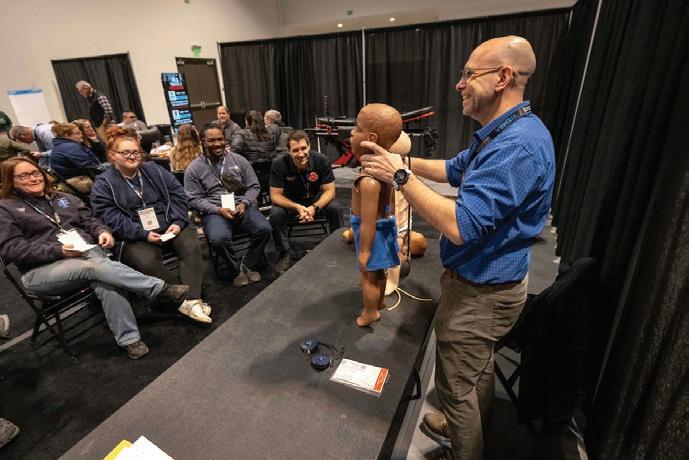
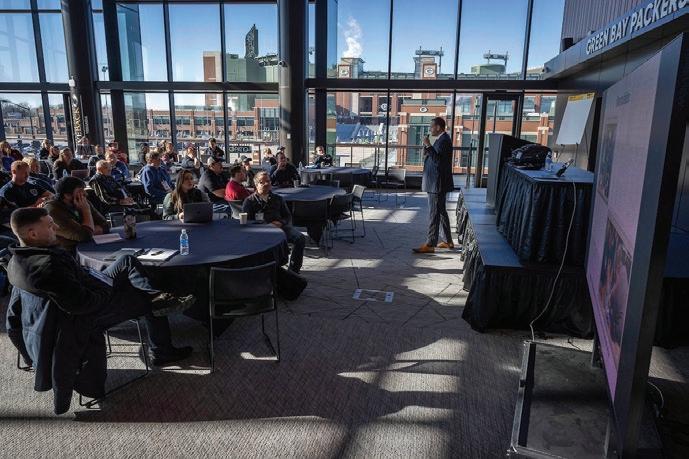
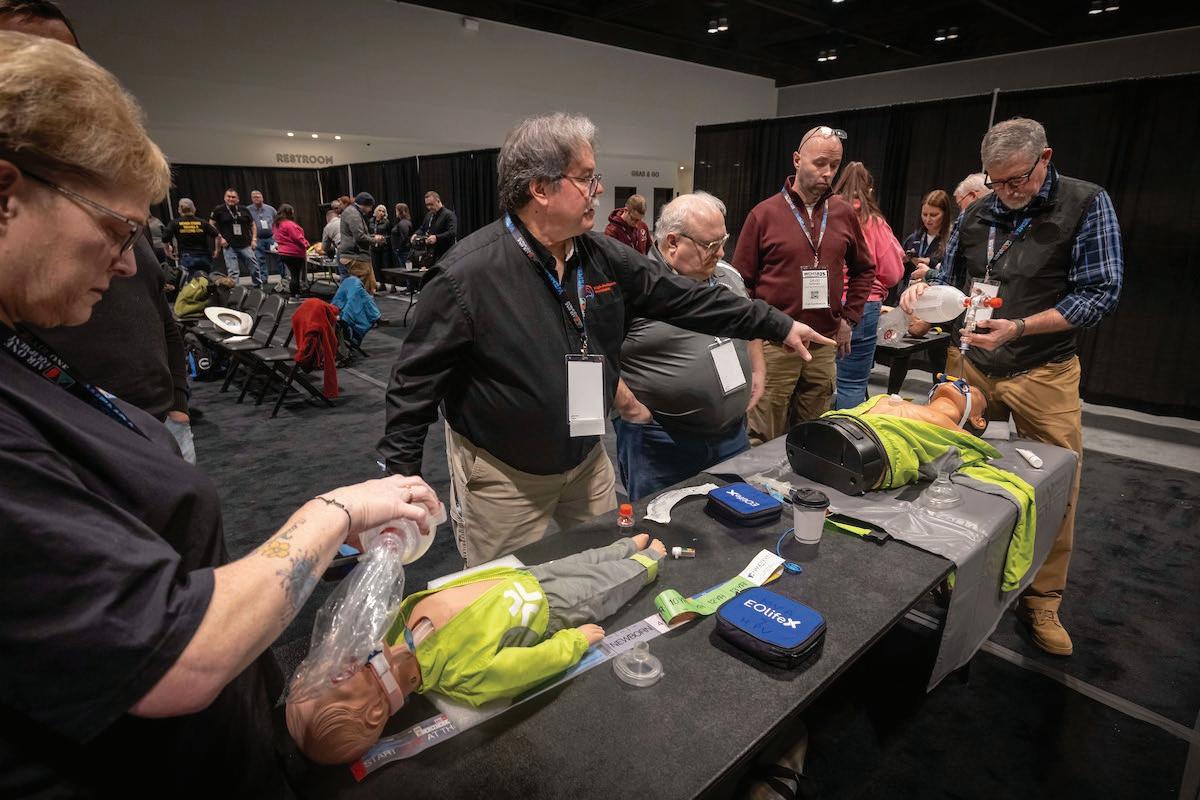
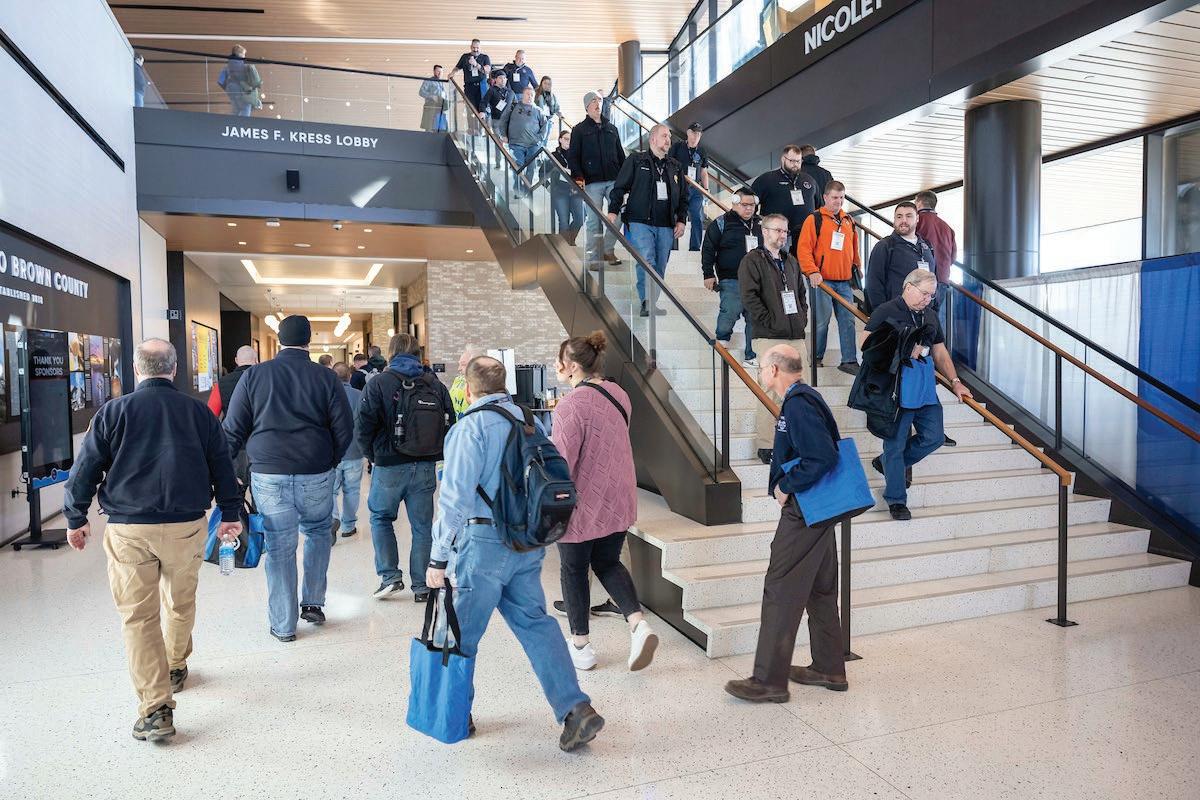
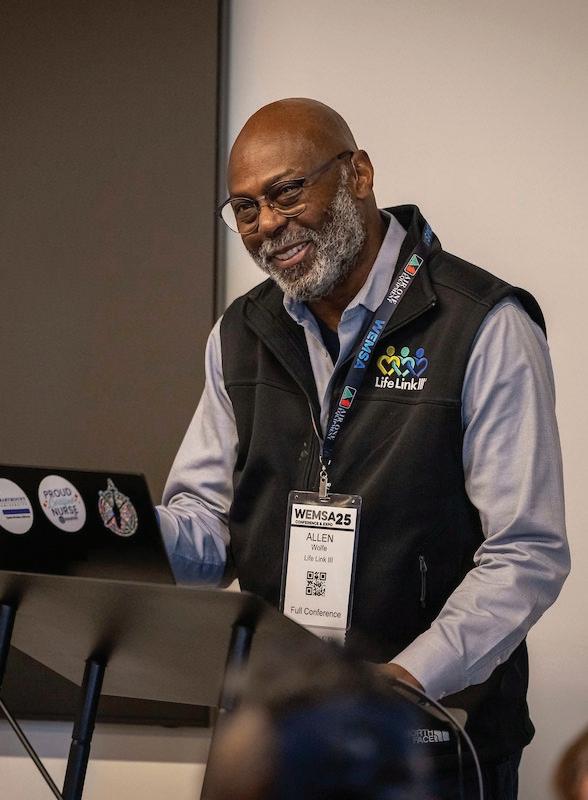


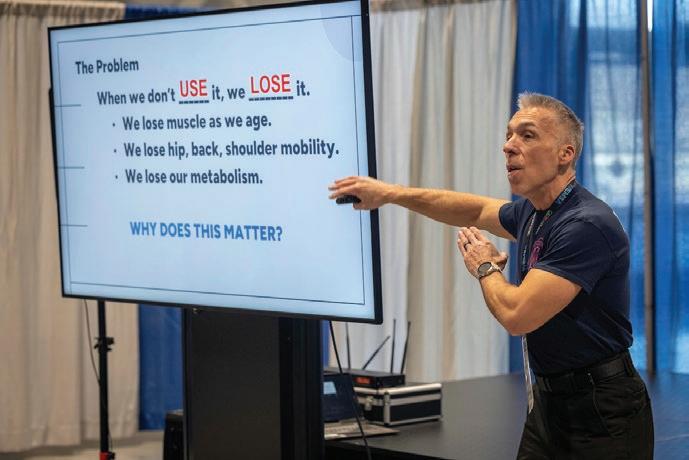
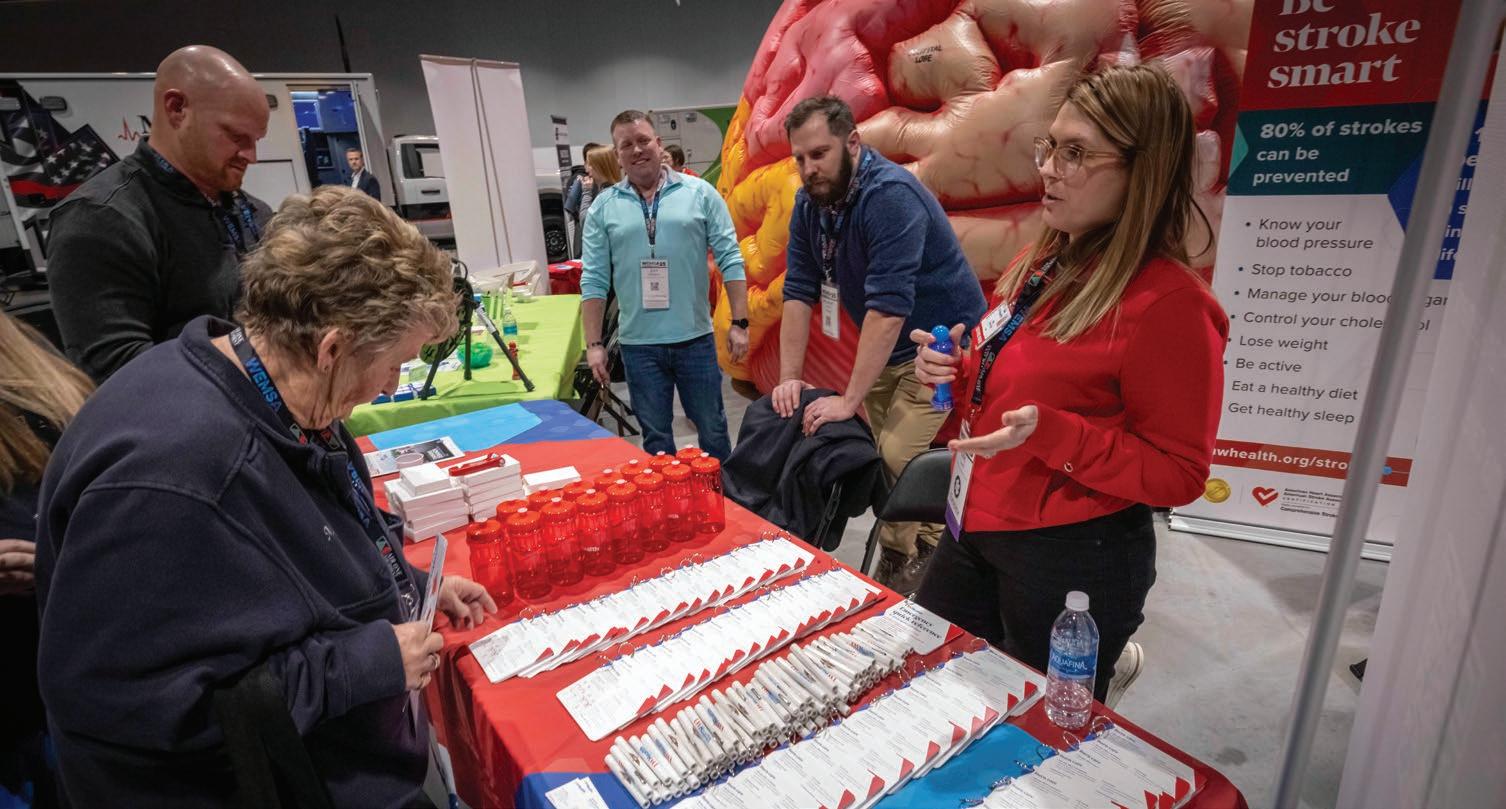
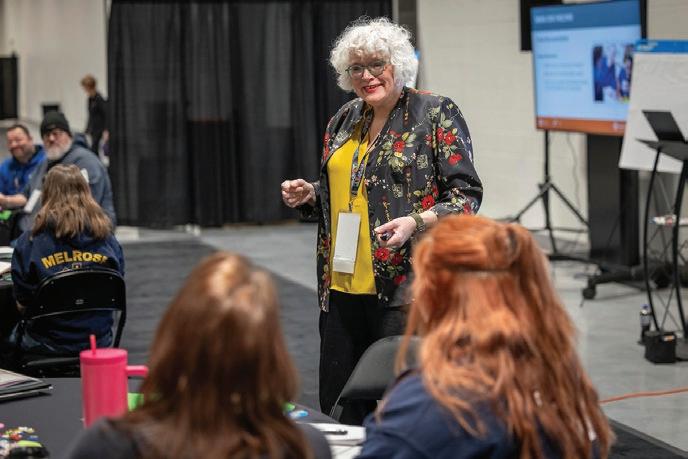





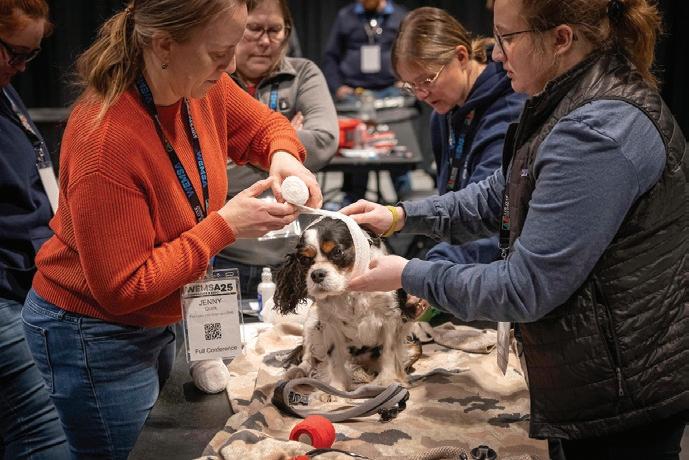
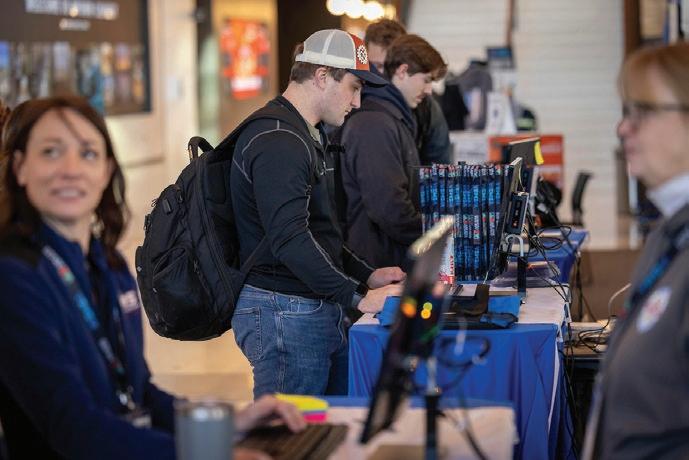
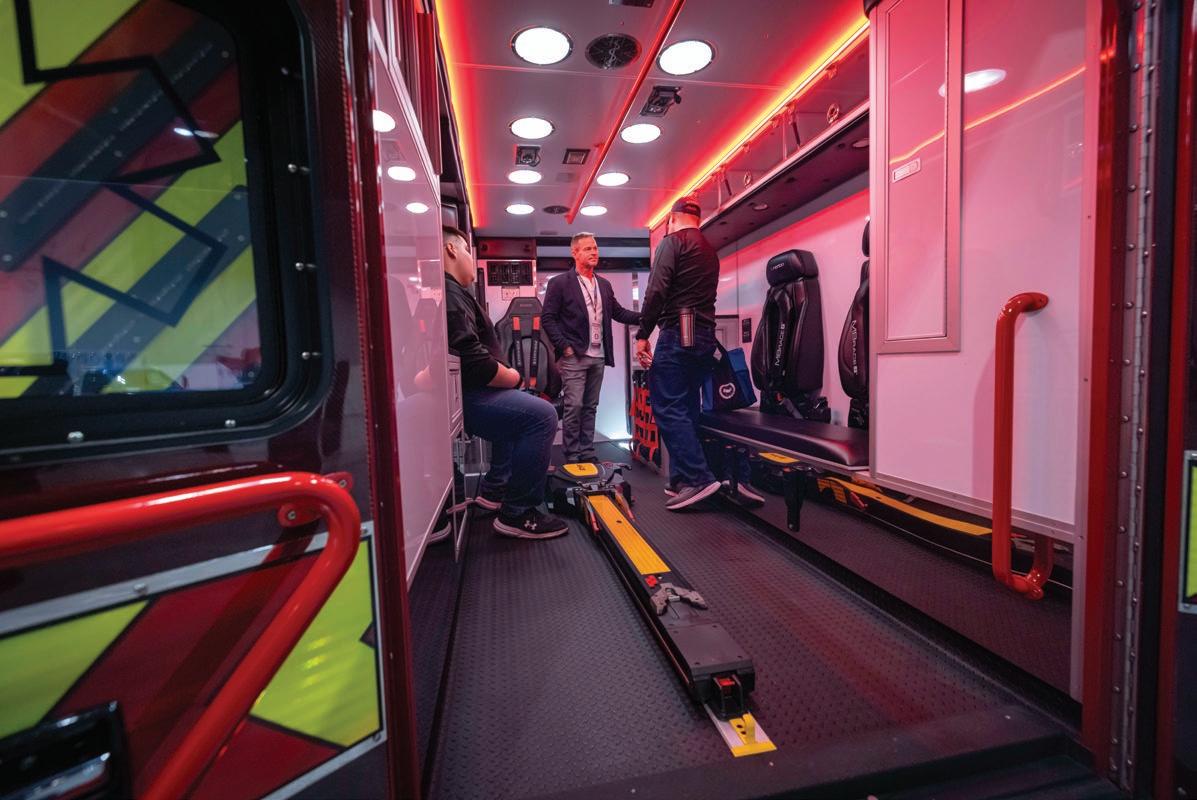
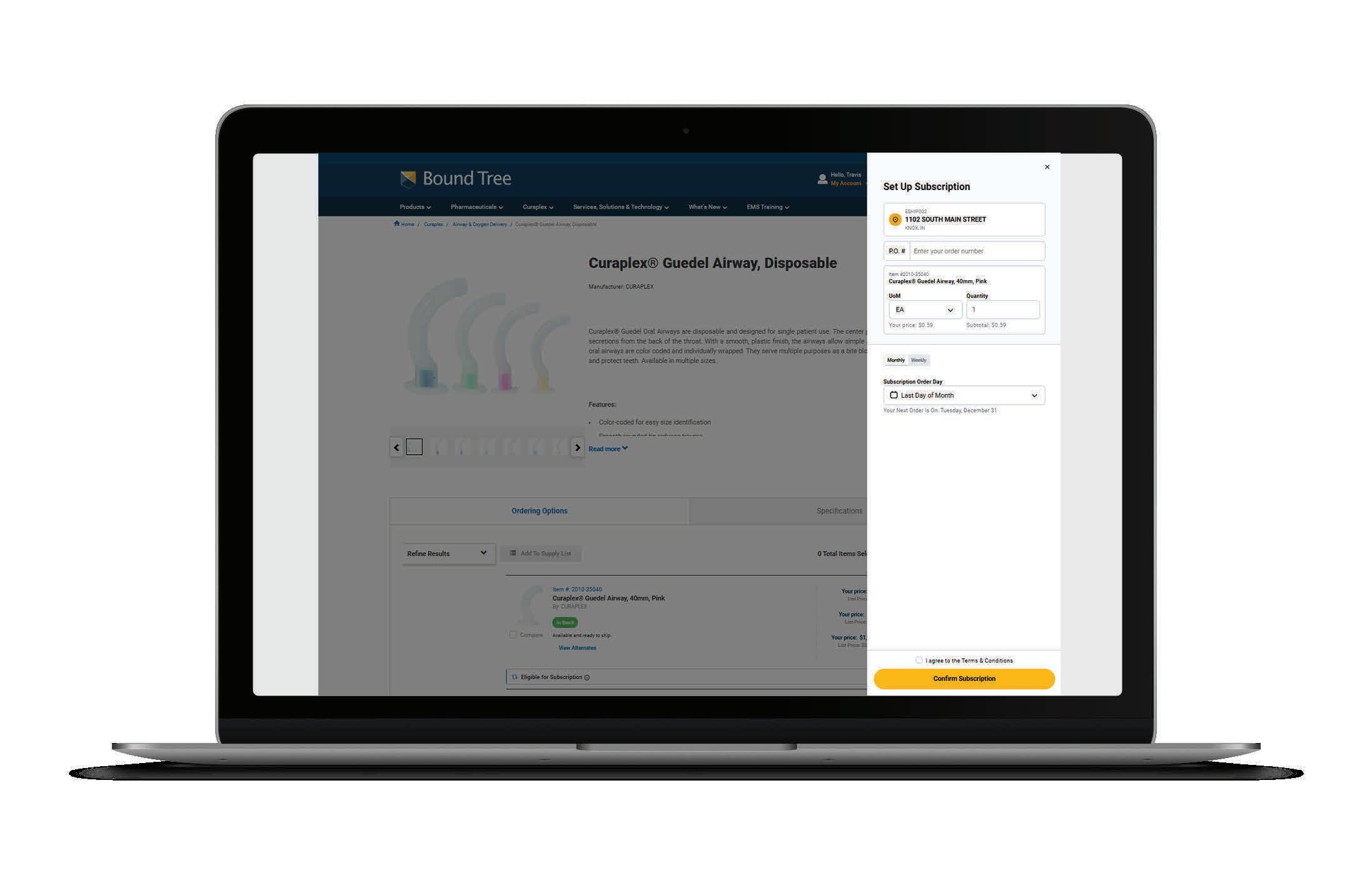
Say goodbye to the hassle of reordering supplies!
Our easy-to-set-up subscription feature keeps you organized and ensures consistent supply levels, making your job easier and more efficient.
Personalized Recommendations Based on Purchase History
Bulk Set Up and Manage Multiple Products
Replicate Subscriptions on Multiple Ship-To’s Monthly or Weekly Ordering Cadence
Skip, Modify or Cancel Options
Email Reminder and Modification Notifications

Raphael M. Barishansky, Public Health & EMS Leader

“One of the most impactful lessons I’ve learned over the years is the value of making a good first impression. Those initial moments set the tone for every interaction that follows, whether it’s with patients, their families, or fellow providers.”
For a long time, I have believed that EMS conferences are indispensable – not only for earning necessary continuing education credits or catching up with colleagues outside of emergency scenes but for far more profound reasons. These gatherings provide a unique platform for growth and perspective. They are a place where EMS providers can hear about the latest initiatives and innovative interventions that other systems are implementing. They offer the chance to learn directly from subject matter experts about critical changes affecting the profession. Most importantly, they encourage all of us to step outside the comfort zones of our own systems and routines, gaining fresh insights to improve how we serve our communities.
When I speak at EMS conferences, I always keep these opportunities in mind. My goal is to present new and thought-provoking content in a way that is both humorous and engaging, allowing providers to absorb and apply the material. Recently, I had the privilege
of delivering the keynote address at the 2025 Wisconsin EMS Association (WEMSA) conference in Green Bay. It was an honor to speak to such a dedicated group of professionals.
During my keynote, I explored the foundational tenets of professionalism, focusing on the behaviors and attitudes that elevate our work in emergency medical services. These include understanding the need for professional behaviors in the ambulance, recognizing and addressing less-than-professional behaviors, and appreciating the importance of looking and acting like a professional.
Reflecting on my own experiences as an EMS provider, I shared examples to illustrate these points. One of the most impactful lessons I’ve learned over the years is the value of making a good first impression. Those initial moments set the tone for every interaction that follows, whether it’s with patients, their families, or fellow providers.
Clear and effective communication is another cornerstone of professionalism
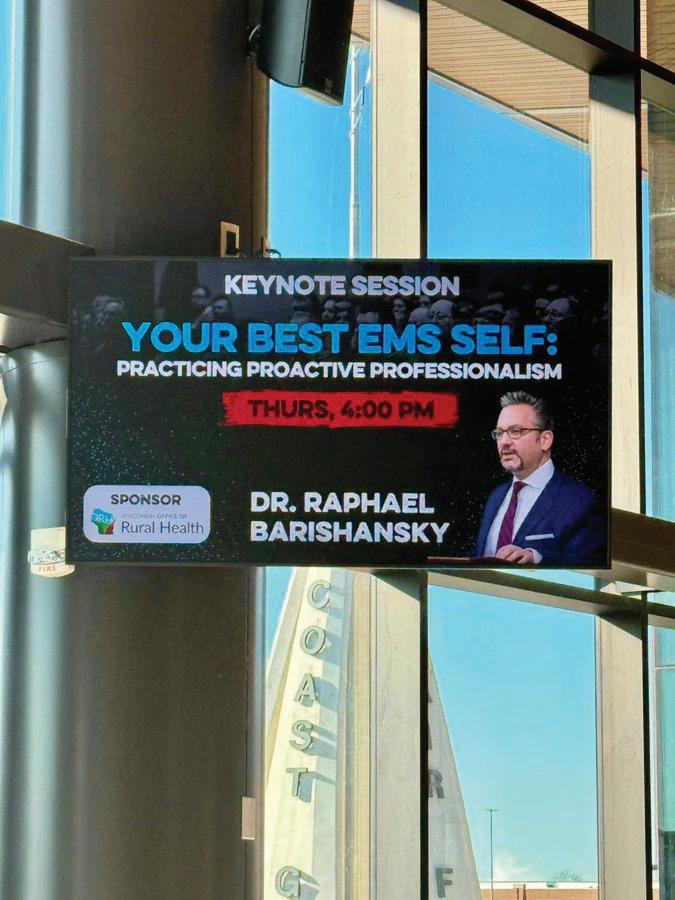
that I emphasized. Patients, and their families, often look to us for reassurance during some of the most vulnerable moments of their lives. Communicating with empathy, clarity, and confidence not only demonstrates professionalism but also builds trust – a critical component of delivering high-quality care.
“It’s your commitment to the profession that inspires me and countless others.”
I also shared a deeply personal story from my early career, a moment that tested my professionalism and ultimately shaped the way I approach my work. On one call, I acted in a way that was far from professional and was called out by my patient for seeming not to care. At that moment, I was forced to confront my own shortcomings. I had to draw on every communication skill I had to “save the call” and reassure the patient that I did, in fact, care deeply for and was committed to their well-being. That experience became a turning point for me, highlighting the importance of self-awareness and accountability in professional growth. It taught me that professionalism is about more than clinical skills or following protocols – it’s about empathy, respect, and the ability to connect with people during some of the worst moments of their lives. It’s about showing that we genuinely care, even when we’re under pressure or facing challenges of our own.
Professionalism in EMS goes beyond wearing a uniform or adhering to protocols – it encompasses the attitudes, behaviors, and ethical standards that elevate our work. It means delivering

excellent patient care even under the most challenging circumstances. It means being committed to lifelong learning and embracing accountability in everything we do.
Understanding professionalism also requires acknowledging the realities of EMS. Ours is a high-stakes, high-pressure field, where time and resources are often limited. Yet, it is precisely because of these challenges that professionalism matters so deeply. It’s the foundation that ensures we remain steadfast in our mission, even when the odds are against us.
As EMS continues to grow and face new challenges, I believe that conferences like WEMSA play a vital role in strengthening our profession. They provide a space for learning, reflection, and connection – key ingredients in shaping the future of EMS.
To all the EMS providers who attended the 2025 WEMSA conference: thank you for your dedication and for taking the time to invest in your own growth. It’s your commitment to the profession that inspires me and countless others. Let’s continue to raise the bar for EMS, one step at a time.
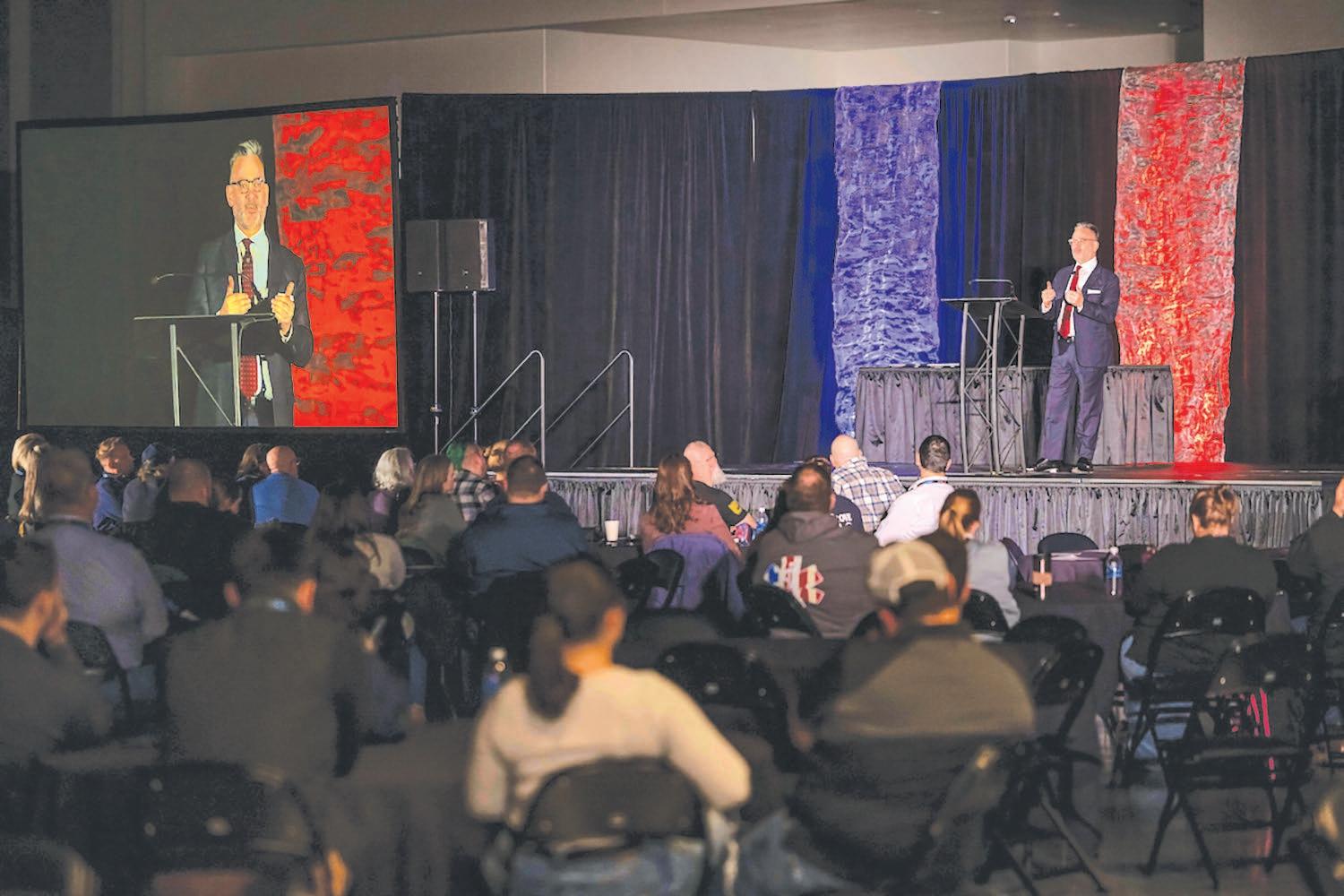
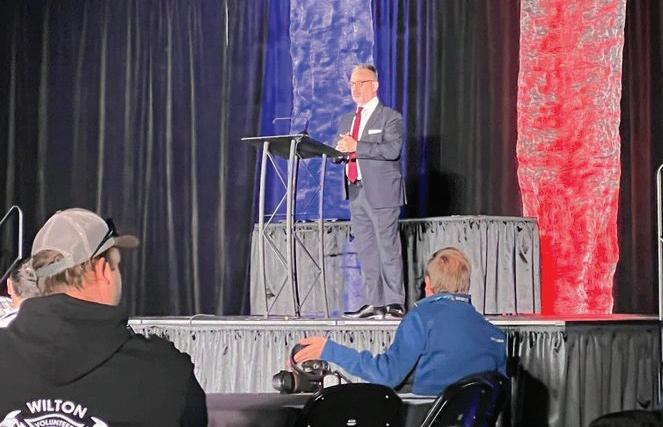
Raphael M. Barishansky is a public health and EMS leader with more than 30 years of experience in a variety of systems and agencies, with positions of increasing responsibility.
Currently, an independent consultant providing his unique perspective and multi-faceted public health and EMS expertise for various organizations, his most recent position before this was as the Deputy Secretary for Health Preparedness and Community Protection at the Pennsylvania Department of Health, a role he recently left after several years. Prior to this position, he served as the Director of the Office of Emergency Medical Services (OEMS) at the Connecticut Department of Public Health.
Dr Barishansky holds an earned doctorate in Public Health (DrPH) from the Fairbanks School of Public Health at Indiana University. In addition, Barishansky possesses a Bachelor of Arts (BA) degree from Touro College, a Master of Public Health degree in Health Policy and Management (MPH/HPM) from New York Medical College, and a Master of Science (MS) degree in Homeland Security Studies at Long Island University.
Dr Barishansky has been published in various journals including the American Journal of Public Health, the Journal of Public Health Management and Practice and the Crisis Response Journal (UK) and has presented at various state, national and international conferences.
Innovative and easy-to-use solutions empower your team to deliver advanced care, no matter the circumstance
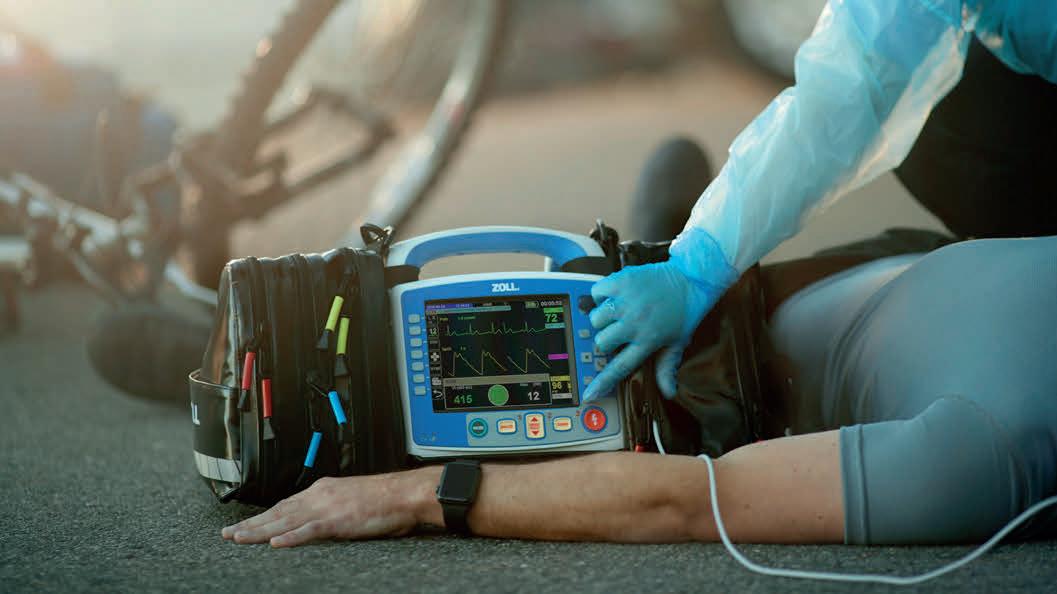
manual
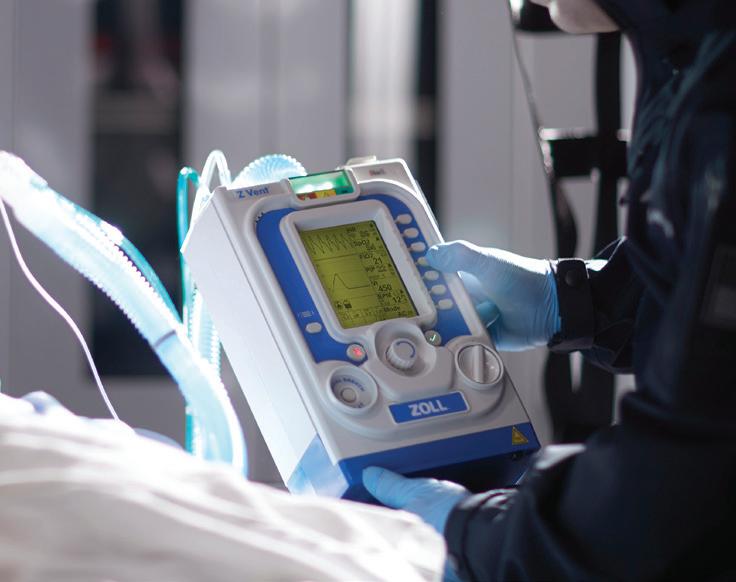
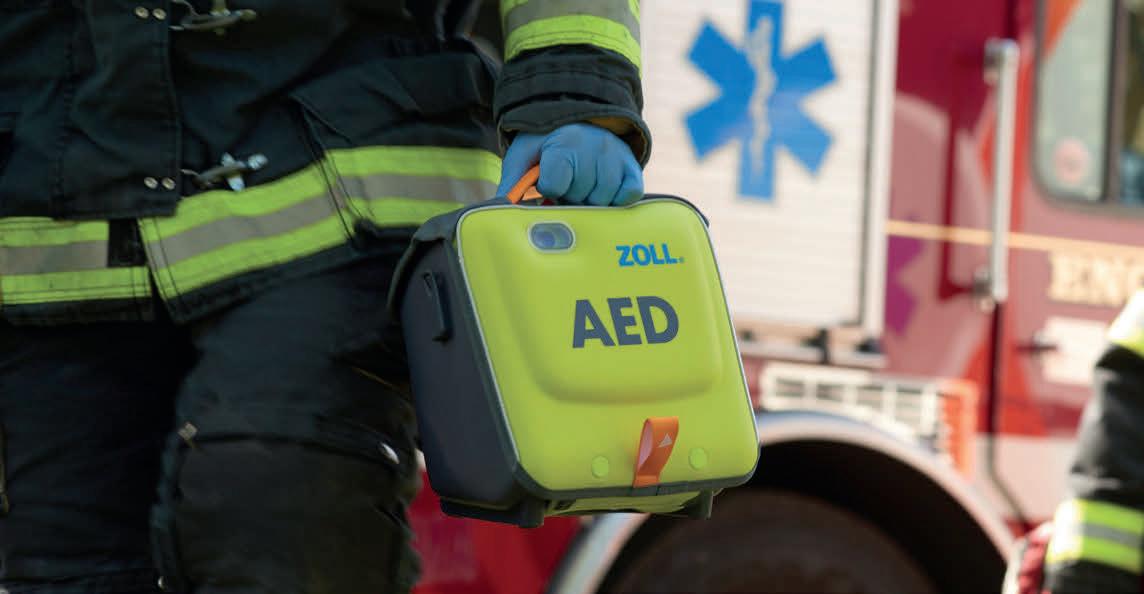
Real-time, high-quality CPR rescue support and defibrillation for adult and pediatric SCA victims combined with one of the shortest rhythm analysis times in the industry
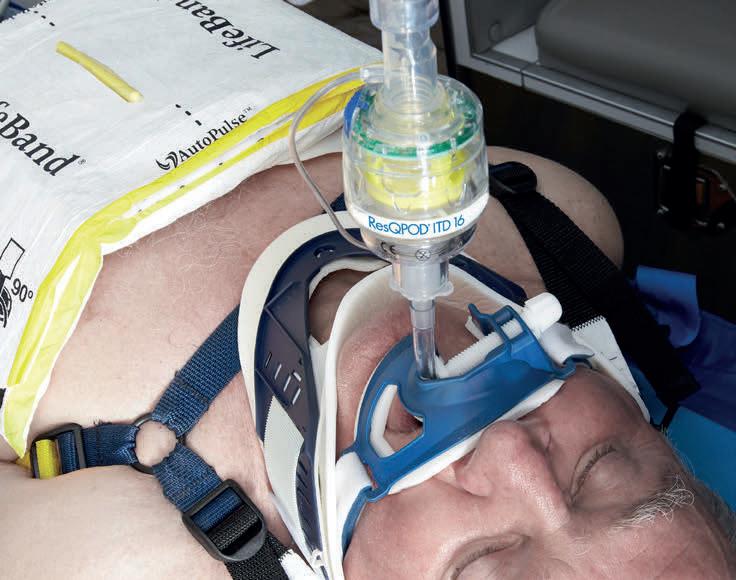
Improve preload and cardiac output with increased negative pressure for better patient outcomes A full range of modes and controls in a durable, lightweight, and portable unit – Ventilation Simplified™
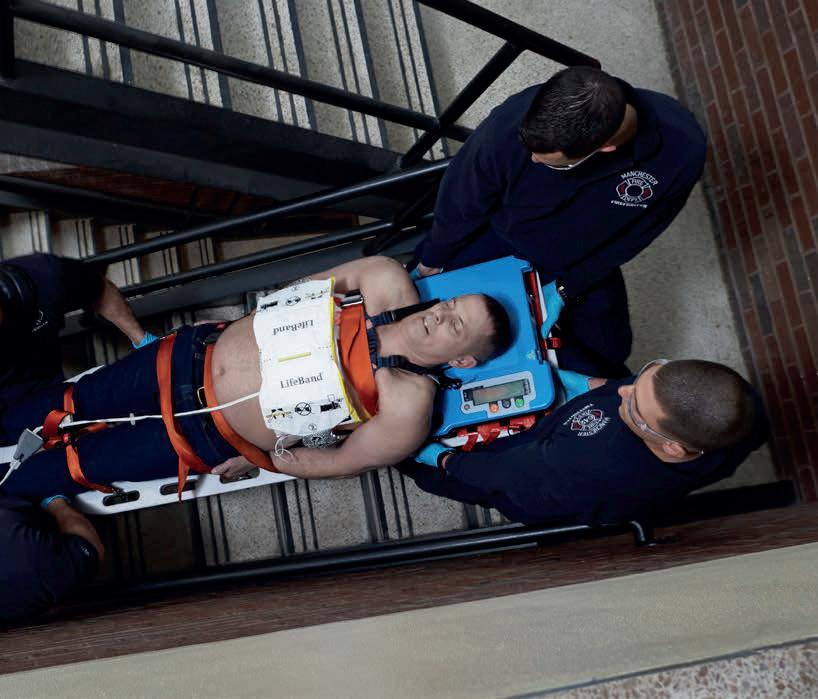
Resuscitation on the Move™ : High quality CPR anywhere, any time, at any angle
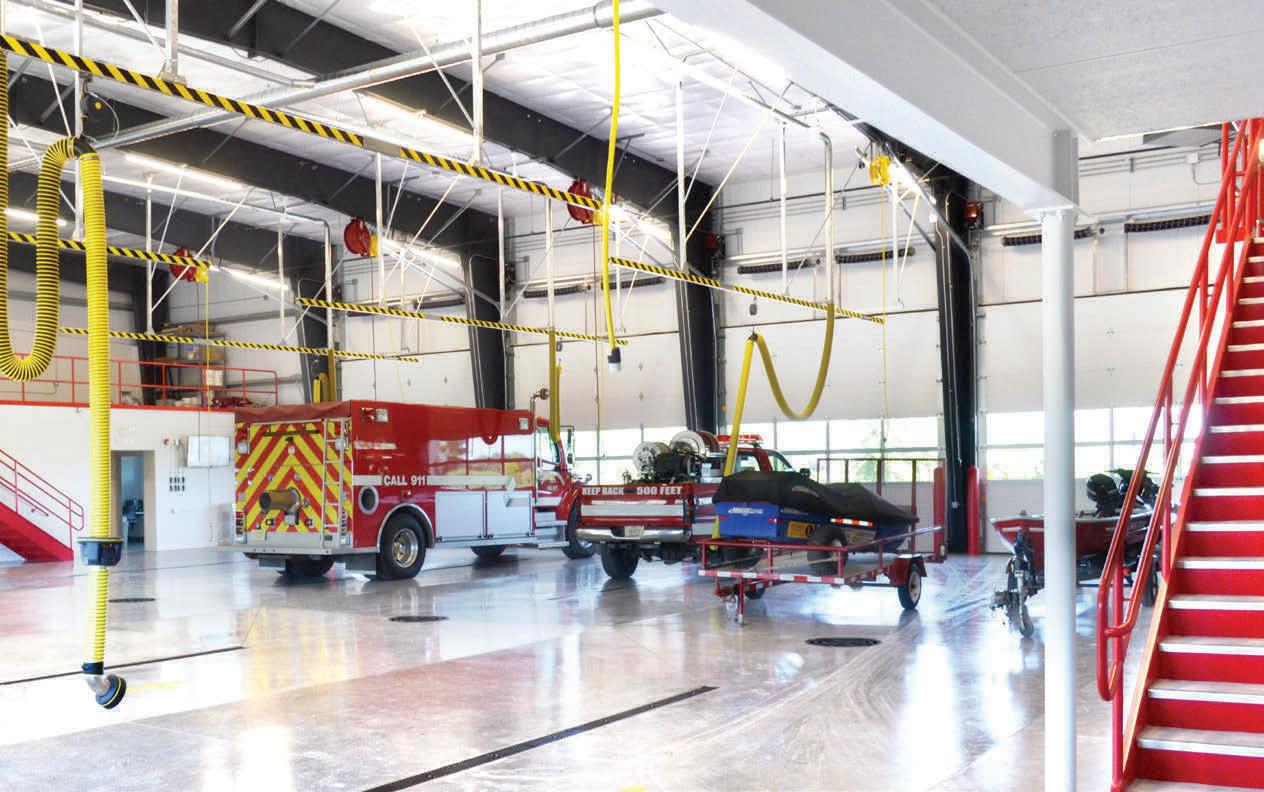
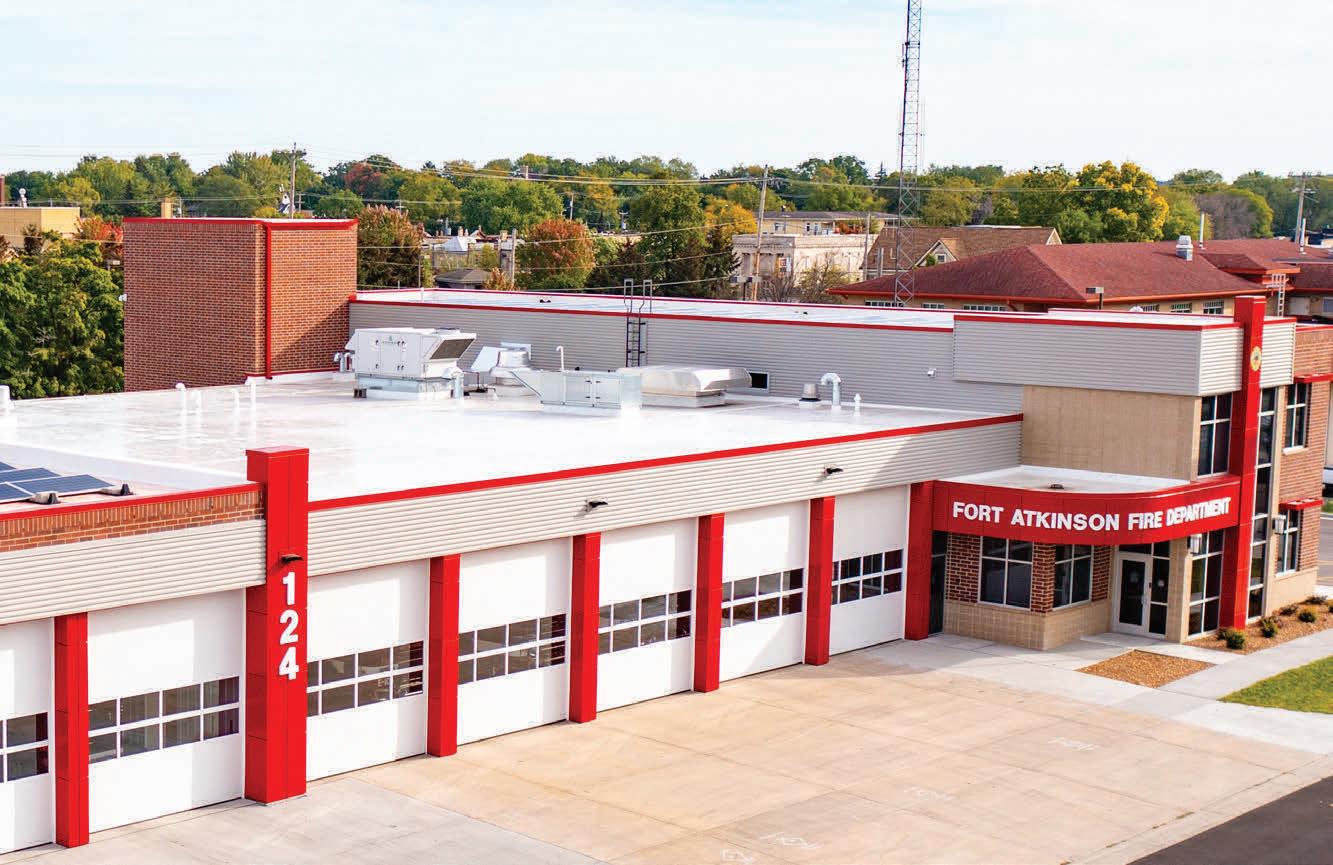
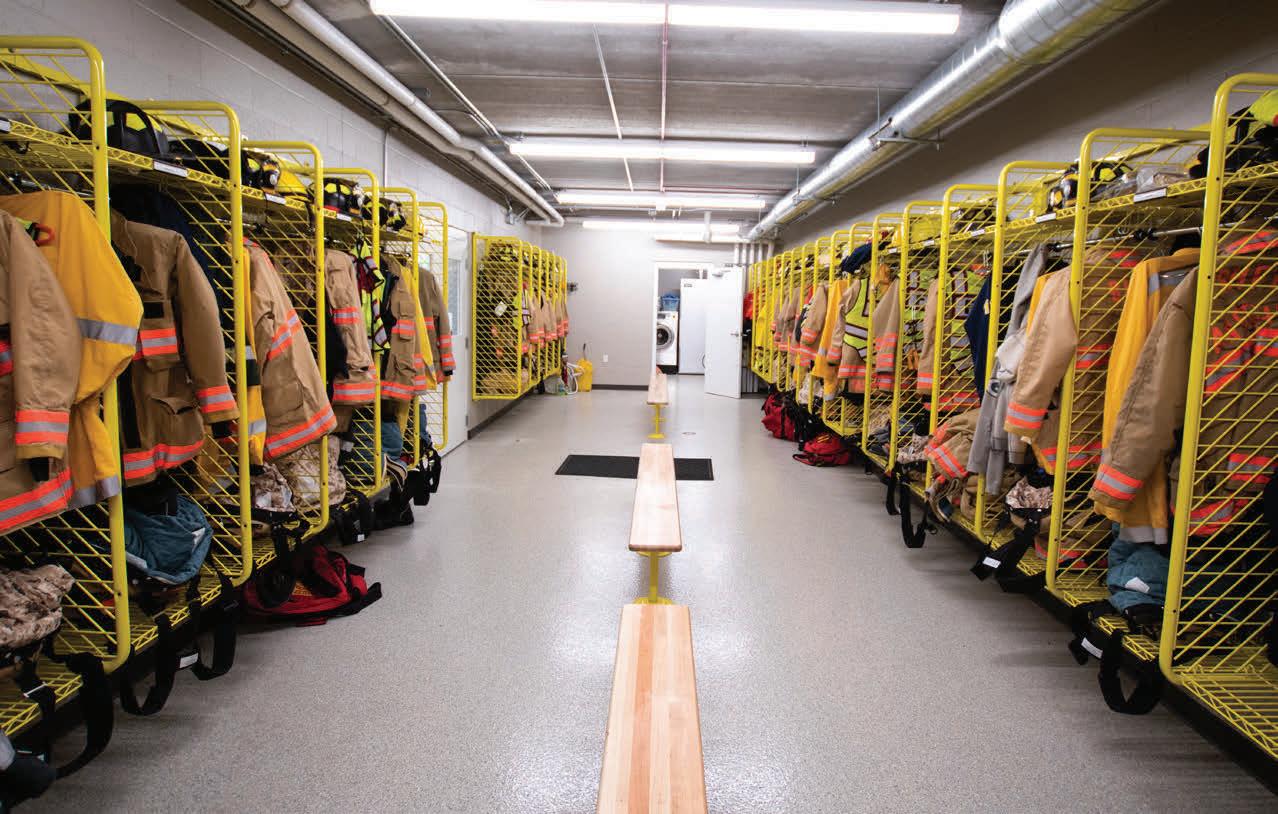




Devin Flanigan, Construction Manager, Keller Builds
Transforming the vision of a state-of-the-art Emergency Medical Services (EMS) station into a tangible reality is a journey fraught with challenges. From securing funding to ensuring regulatory compliance and meeting the diverse needs of personnel and the community, EMS station projects demand a strategic approach and unwavering dedication. This article explores the multifaceted hurdles encountered during the development of EMS stations and offers insights into overcoming them, ensuring the successful realization of these critical facilities.
One of the foremost challenges in EMS station projects is securing adequate funding. EMS services often operate within tight budget constraints, making it essential to identify diverse funding sources, including government grants and local governmental funding. Transparent communication of the project's benefits to the community and stakeholders can garner support and open new avenues for financial backing.
Choosing the right location for an EMS station is pivotal. The site must offer strategic access to the served community, considering factors like traffic patterns, response time metrics, and proximity to critical infrastructure. Balancing these operational necessities with community integration is crucial. Engaging with community members through forums and meetings can ensure the station not only
“The journey from the conceptualization to the completion of an EMS station is complex and challenging. Yet, with strategic planning, community engagement, and a commitment to flexibility and sustainability, these hurdles can be surmounted.”
meets EMS operational needs but also becomes a valued community asset.
Navigating the maze of regulatory requirements and design standards is another significant challenge. EMS stations must comply with a plethora of local, state, and federal regulations, including zoning laws, building codes, and ADA standards. Collaborating with experienced architects and legal advisors who specialize in public service buildings can streamline this process, ensuring compliance while maintaining the integrity of the original design vision.
The rapid pace of technological advancement presents both opportunities and challenges for EMS station projects. Incorporating cutting-edge technology enhances operational efficiency but requires a flexible design approach to accommodate future innovations. Designing for adaptability, with modular spaces and scalable infrastructure, ensures the station can evolve alongside technological progress without necessitating constant overhauls.
Throughout the construction or renovation of an EMS station, maintaining uninterrupted emergency services is paramount. This requires meticulous planning and phased construction strategies that allow the EMS to operate without compromise. Temporary facilities and clear communication with personnel and the community are essential to ensure that service delivery continues seamlessly during the transition.
The journey from the conceptualization to the completion of an EMS station is complex and challenging. Yet, with strategic planning, community engagement, and a commitment to flexibility and sustainability, these hurdles can be surmounted. The result is a facility that not only meets the immediate needs of EMS personnel and the communities they serve but also stands as a resilient and adaptable foundation for future emergency medical services. In navigating these challenges, the vision of a modern, efficient, and community-integrated EMS station can become a reality, serving as a testament to the dedication and foresight of all involved.

This EMS Week, we recognize the commitment, skill, and compassion of EMS professionals across Wisconsin and beyond. The 2025 theme, "We Care. For Everyone," reflects what EMS has always stood for—providing care without hesitation, without barriers, and without judgment.
For over 50 years, EMS providers have been the steady hands in moments of crisis, the calm voices in the chaos, and the unwavering support for those in need. Whether responding to an emergency, ed ucating the next generation, or advocating for better systems of care, EMS professionals show up for everyone—no matter the circumstance, no matter the challenge.
As we honor the past and look toward the future, we extend our deepest gratitude to those who dedicate their lives to serving others. Your work saves lives, strengthens communities, and reminds us all what it truly means to care.
To all EMS professionals across Wisconsin and beyond, thank you for your service, your sacrifice, and your dedication to the noble cause of saving lives.
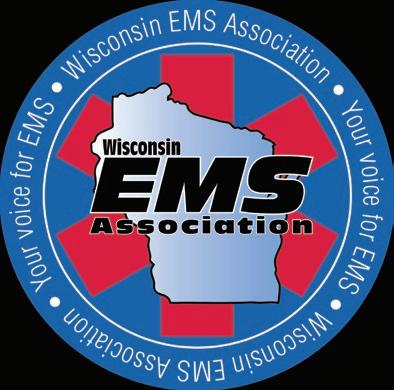
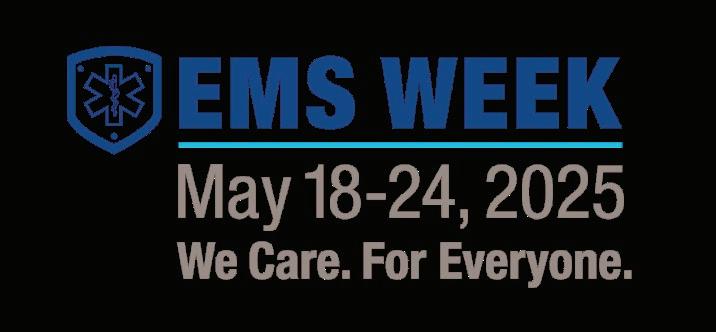
To designate the Week of May 18-24, 2025, as Emergency Medical Services Week (EMS Week)
WHEREAS, emergency medical services is a vital public service; and
WHEREAS, the members of emergency medical services teams are ready to provide lifesaving care to those in need 24 hours a day, seven days a week; and
WHEREAS, access to quality emergency care dramatically improves the survival and recovery rate of those who experience sudden illness or injury; and
WHEREAS, emergency medical services fills healthcare gaps by providing important, out-ofhospital care, including preventative medicine, follow-up care, and access to telemedicine; and
WHEREAS, the emergency medical services system consists of first responders, emergency medical technicians, paramedics, emergency medical dispatchers, firefighters, police officers, educators, administrators, pre-hospital nurses, emergency nurses, emergency physicians, trained members of the public, and other out of hospital medical care providers; and
WHEREAS, the members of emergency medical services teams, whether career or volunteer, engage in thousands of hours of specialized training and continuing education to enhance their lifesaving skills; and
WHEREAS, it is appropriate to recognize the value and the accomplishments of emergency medical services providers by designating the Emergency Medical Services Week; now
THEREFORE, I, Alan DeYoung, Executive Director, Wind Lake, WI in recognition of this event do hereby proclaim the week of May 18 – 24, 2025, as
The 51st anniversary of EMS Week theme is EMS WEEK: We Care. For Everyone I encourage the community to observe this week with appropriate programs, ceremonies, and activities in honor of the EMS profession and the essential service it provides

Executive Director Wisconsin EMS Association
Name and Title of Official
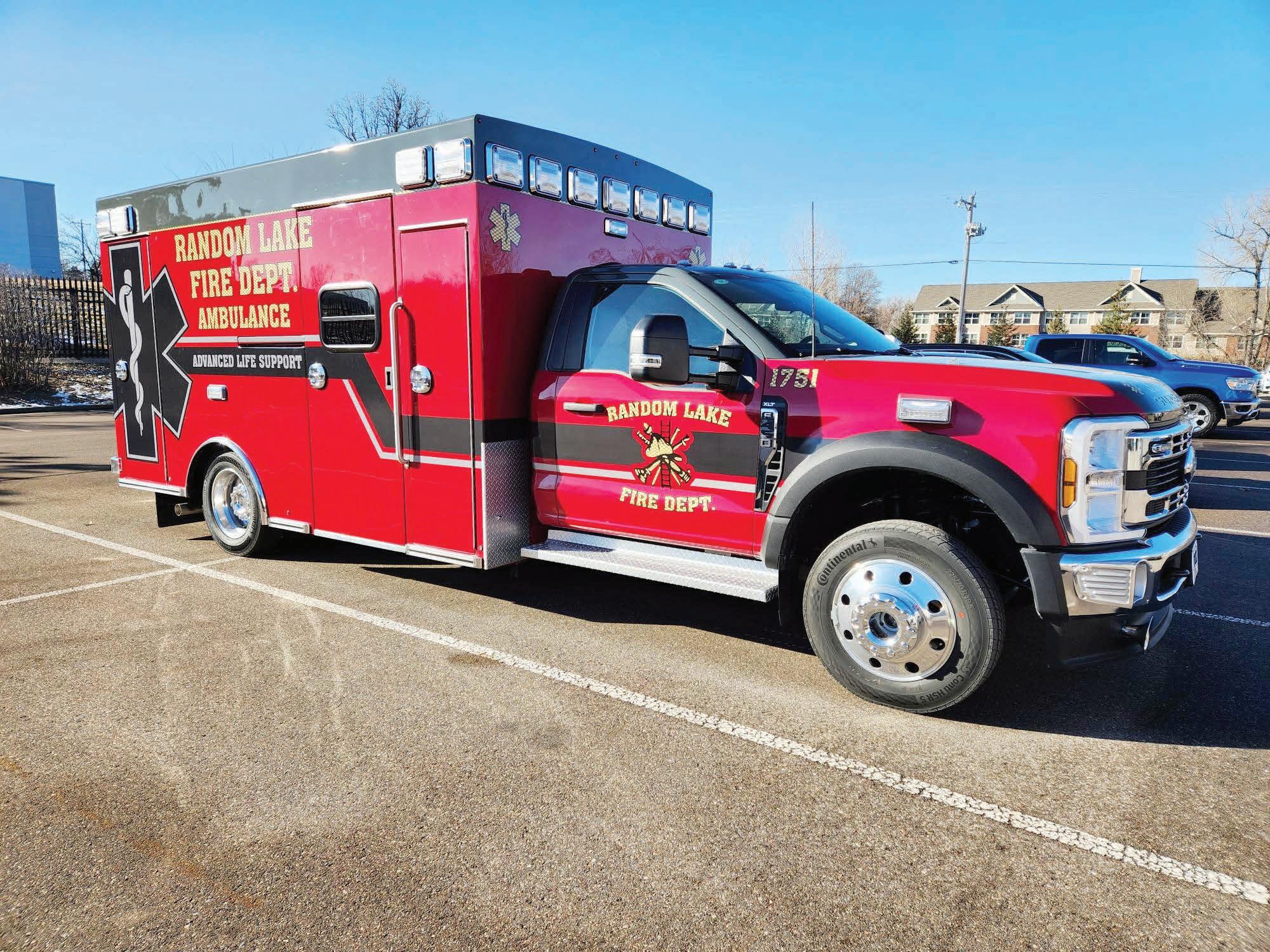
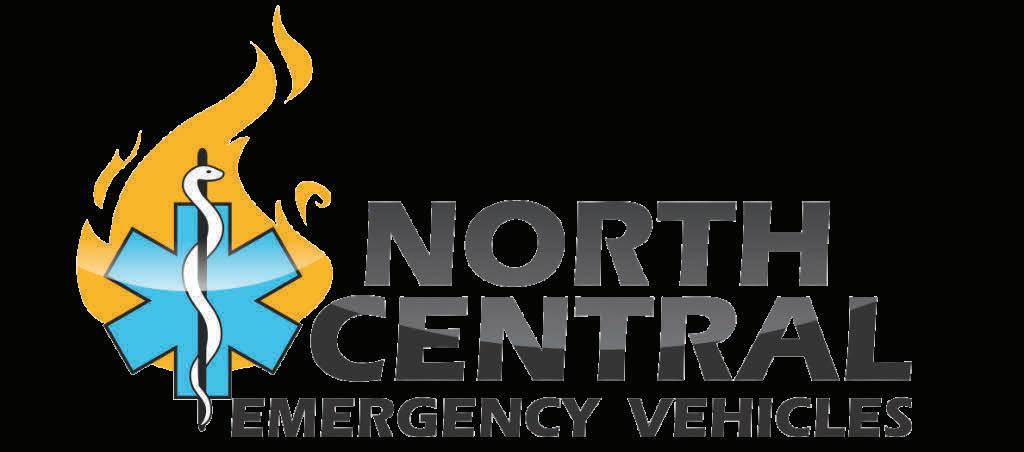
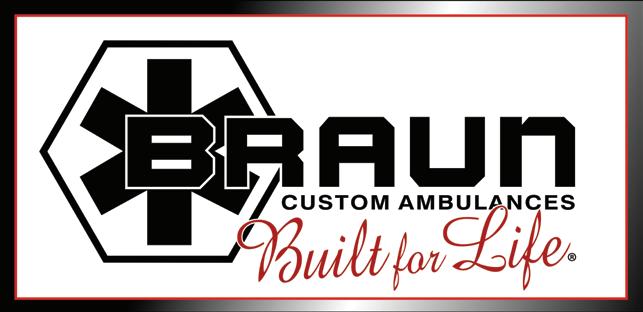
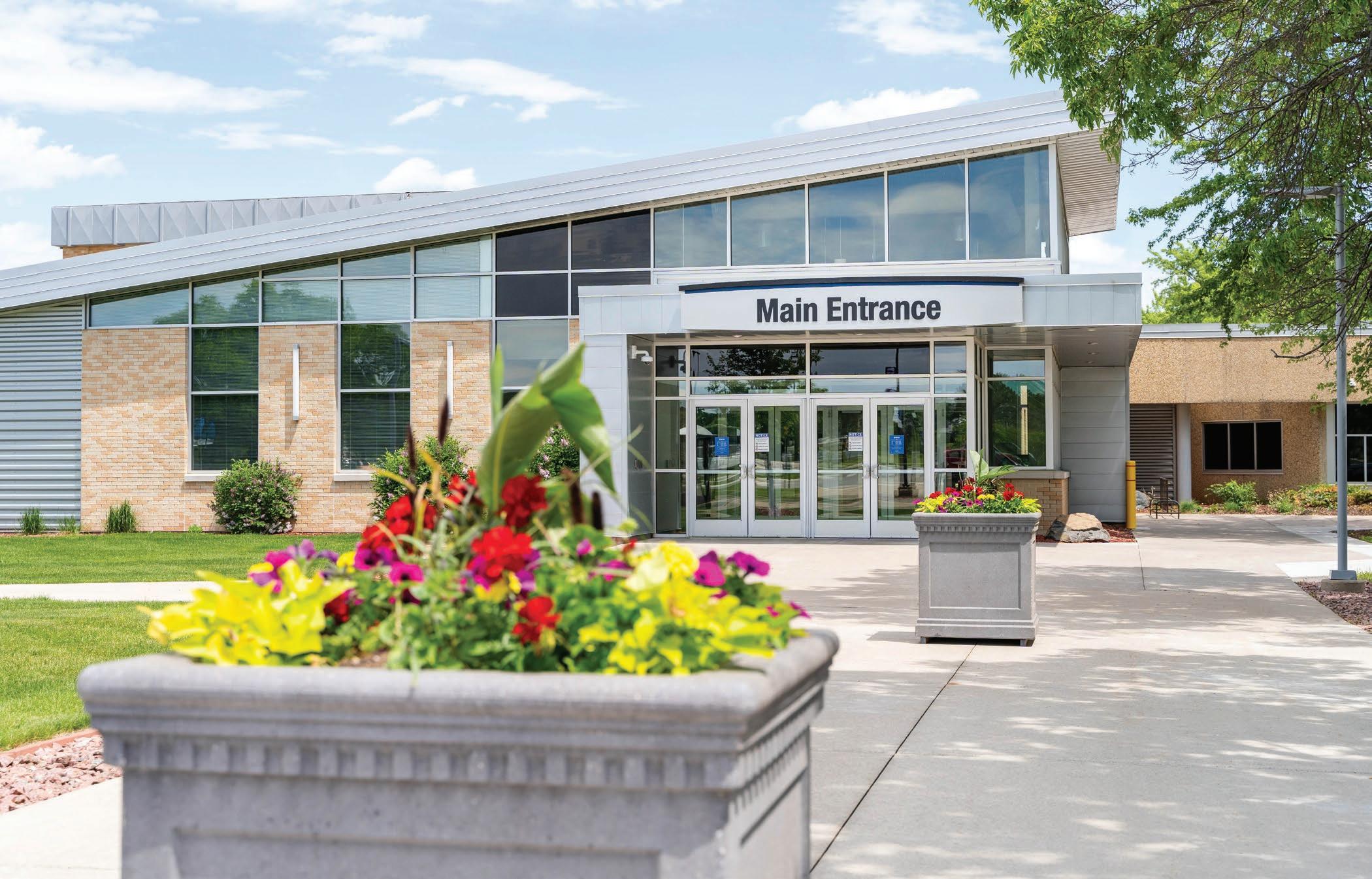
Q: CAN YOU PROVIDE AN OVERVIEW OF YOUR EMS PROGRAM? WHERE IS YOUR COLLEGE LOCATED AND WHAT PROGRAMS DO YOU OFFER FOR EMS?
A: Northcentral Technical College (NTC) is headquartered in Wausau, Wisconsin, with satellite locations in Antigo, Merrill, Medford, Spencer, Phillips, and Wittenberg. Our goal is to provide highquality, learner and employer-focused educational pathways that enrich lives and strengthen communities – values that are embedded into every aspect of our EMS programs.
Our EMS division offers comprehensive, cutting-edge training that prepares students for dynamic careers in emergency medical services. Programs include:
• Emergency Medical Responder (EMR) – A 72-hour introductory course with no clinical requirement.
• Emergency Medical Technician (EMT) – A 108-hour course, including approximately 10 hours of clinical experience, to build hands-on patient care skills.
• Advanced EMT (AEMT) – A 180-hour mid-level provider program designed to expand an EMT’s scope of practice
• Paramedic – A hybrid 1-year program that allows students to earn their paramedic certification while maintaining a full-time job.
• Critical Care Paramedic (CCP) –A program designed for experienced
paramedics, providing training in ventilator management, advanced pharmacology, and interfacility transport of critically ill patients.
• 100% Online EMS Refreshers –We offer fully online refresher courses for all EMS certification levels, providing flexibility for working professionals. Departments can also schedule in-person refresher training on demand to meet their needs.
We believe in and promote access, ingenuity, and continuous improvement in education, which is why we’ve structured our programs using a hybrid learning model – blending online coursework, in-person labs, and real-world clinical experiences.
Our EMS program supports learners of all backgrounds and schedules, aligning with our goal of increasing class accessibility by offering flexible scheduling, multiple campus locations, and online/hybrid options.
A: NTC is at the forefront of EMS education in Wisconsin, driven by our commitment to flexibility, accessibility, and student success. Our core values –learner focus, ingenuity, and service to community – shape every aspect of our EMS training.
What makes us unique?
• Hybrid & Flexible Learning Options –Every EMS course at NTC is designed with learner accessibility in mind. Our hybrid learning model ensures that students who cannot attend traditional in-person classes still receive highquality instruction.
• EMT students can attend in-person labs in Wausau or complete skills at approved locations. Paramedic
students have optional in-person lectures on Tuesdays and Thursdays, plus open labs on Wednesdays and Thursdays for hands-on practice.
• Critical Care Paramedic students train in an online format in order to receive their endorsement.
• 100% Online & On-Demand EMS Refreshers – We recognize the need for ongoing certification renewal and provide fully online refreshers for EMR, EMT, AEMT, Paramedic, and Critical Care levels. Additionally, departments can schedule in-person
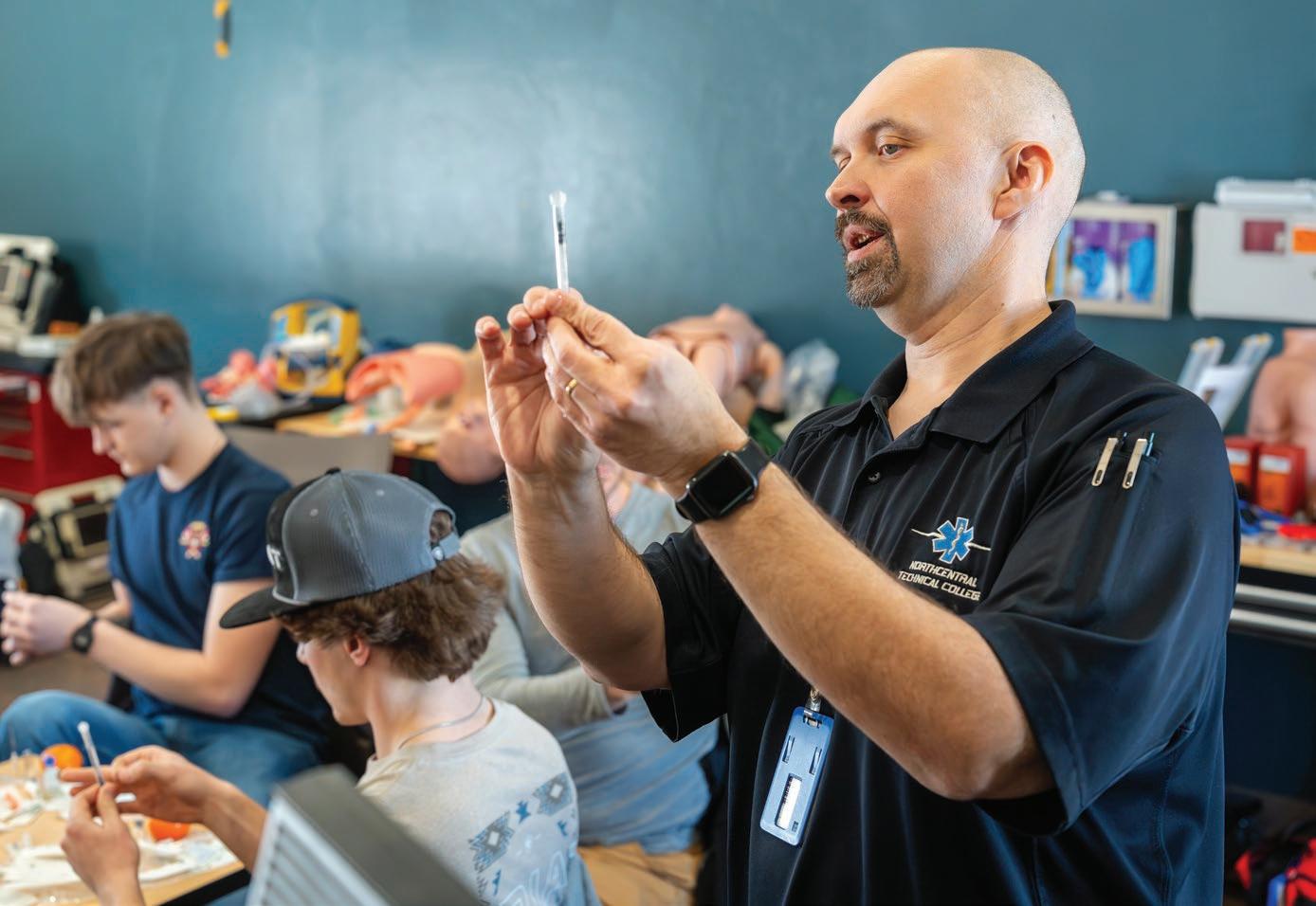

refresher training on demand to meet their unique needs.
• Commitment to Student Success & High NREMT Pass Rates – NTC’s NREMT pass rate goal is to consistently exceed state averages. To achieve this, we offer mock exams, tutoring, and dedicated study sessions to support student learning.
• Hands-On, Competency-Based Training – We believe in continuous improvement, meaning that our programs focus on skill competency rather than just required hours. Students demonstrate mastery at their own pace, ensuring they are confident in their abilities before entering the field.
• Strong Regional & Statewide Partnerships – NTC works closely with fire departments, EMS agencies, hospitals, and critical care transport teams to provide high-quality clinical experiences for students.
• Stackable Career Pathways –We offer a clear pathway from EMR to EMT, AEMT, Paramedic, and Critical Care Paramedic, ensuring students have structured career advancement opportunities. Our culture of professionalism ensures that students are trained by knowledgeable, forward-thinking, and caring instructors who act with integrity and respect, setting them up for a successful and impactful career in EMS.
Q: HOW DOES YOUR EMS PROGRAM ADAPT TO THE CHANGING NEEDS OF THE EMS FIELD?
A: NTC continuously improves its EMS programs to meet the evolving demands of emergency medicine, aligning with our mission of strengthening the economy and serving our communities. Our ingenuity and adaptability are what make us a trusted training provider for Wisconsin EMS professionals.
• Expanding Hybrid Learning Options – Our EMS program removes barriers by making courses more accessible to working students and those in rural areas through hybrid and online learning models.
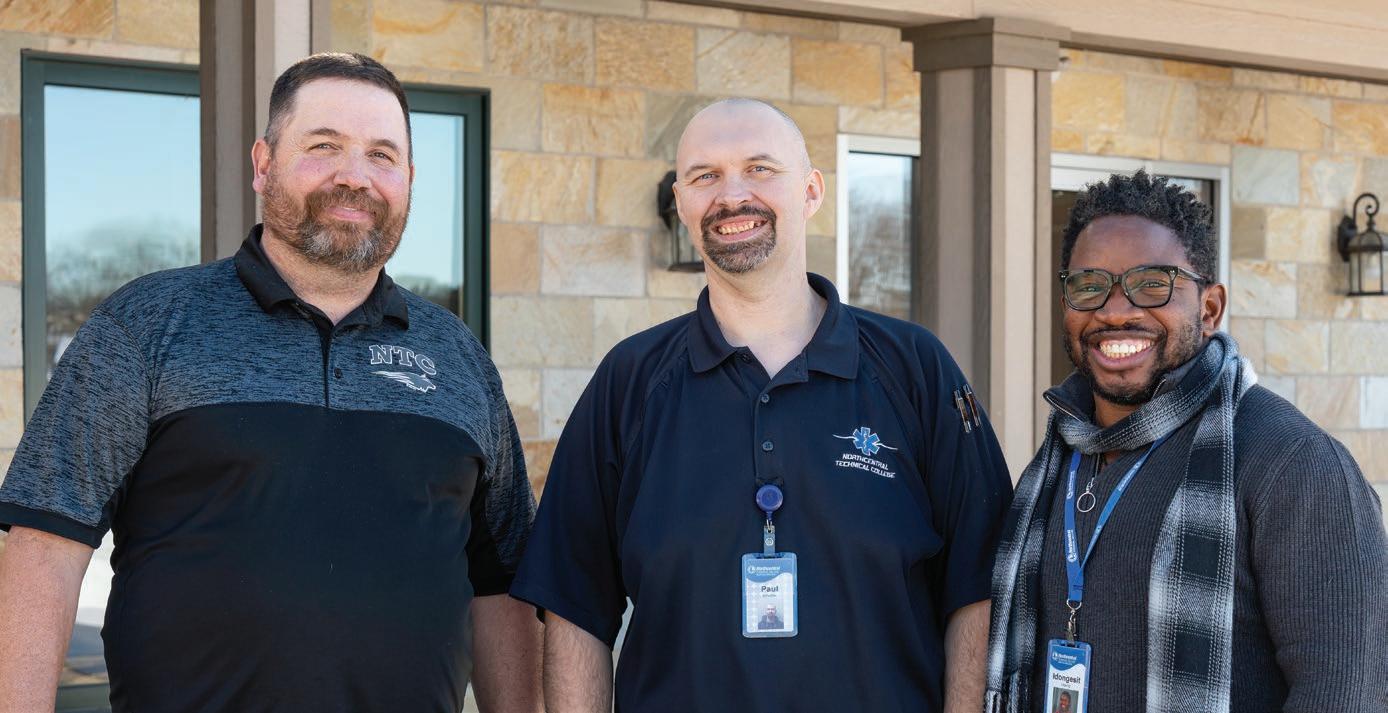
• Integrating Advanced Technology & Simulation – We use cutting-edge simulation tools that replicate highrisk emergency scenarios, allowing students to gain realistic training in a safe learning environment.
• Flexible Clinical & Skills Completion Options – NTC’s class accessibility goal ensures that students can complete skills assessments at NTC, approved external locations, or via video submission for instructor evaluation.
• 100% Online & On-Demand EMS Refreshers – In response to agency needs and industry demands, NTC offers completely online refresher training with the option for customized, in-person refresher sessions for EMS departments. By aligning our service to community values, NTC collaborates with healthcare leaders, EMS agencies, and advisory boards to ensure that our training remains current, relevant, and beneficial to both learners and employers.
Q: WHAT ADVICE DO YOU HAVE FOR STUDENTS CONSIDERING A FUTURE AND/OR ADVANCEMENT IN EMS?
A: We advocate for student success and believe in providing an engaging, life-long learning environment to support learners as they realize their educational and career goals. For those considering a career in EMS, here’s our advice:
• Embrace Hybrid Learning – Take advantage of NTC’s flexible course options to balance education with
work and family responsibilities.
• Utilize Online & On-Demand Training – Stay certified with our 100% online EMS refresher courses, or have your department schedule an ondemand, in-person refresher session.
• Seek Hands-On Experience – Clinical ride-a-longs, hospital rotations, and lab days provide real-world exposure that is essential for success.
• Plan for Career Growth – EMS offers multiple career pathways –advancing to AEMT, Paramedic, or Critical Care Paramedic will increase your earning potential and expand your job opportunities.
• Develop Leadership & Professionalism – Become involved in EMS organizations, attend workshops, and seek additional certifications to stay competitive in the field.
• Prioritize Well-Being & Support –A career in EMS is both rewarding and demanding. Build a support network, practice self-care, and develop resilience strategies to maintain long-term success in the field.
NTC’s EMS programs are built on a foundation of learner success, innovation, and community service. Whether students are starting their careers, seeking advancement, or maintaining certification, our flexible, hybrid, and on-demand options provide accessible, high-quality training for the modern EMS professional.
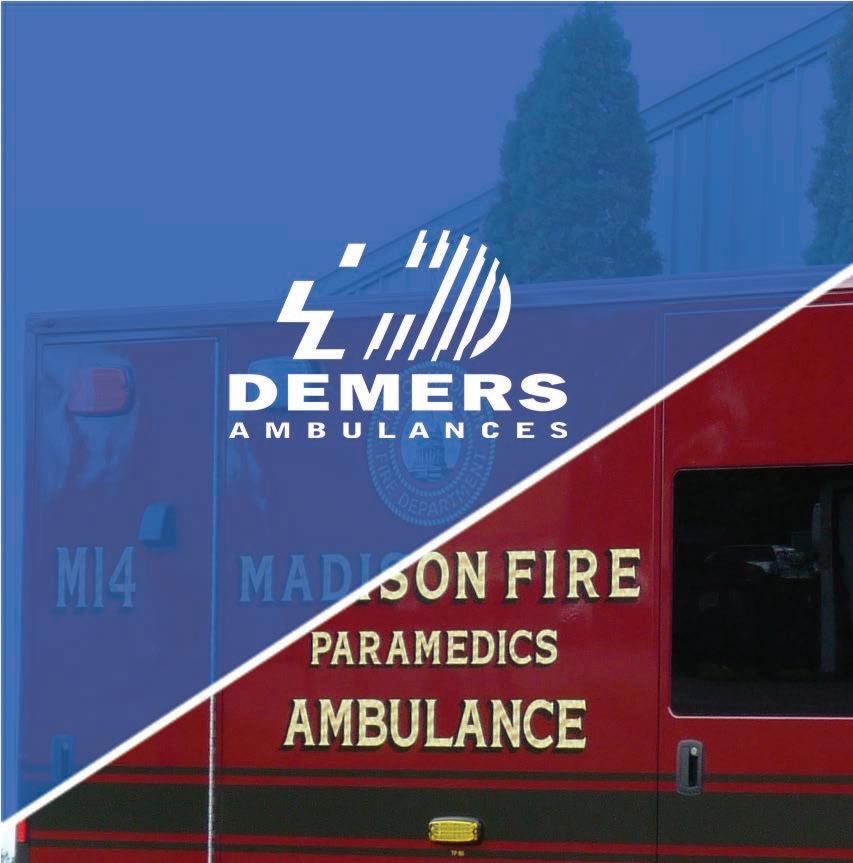

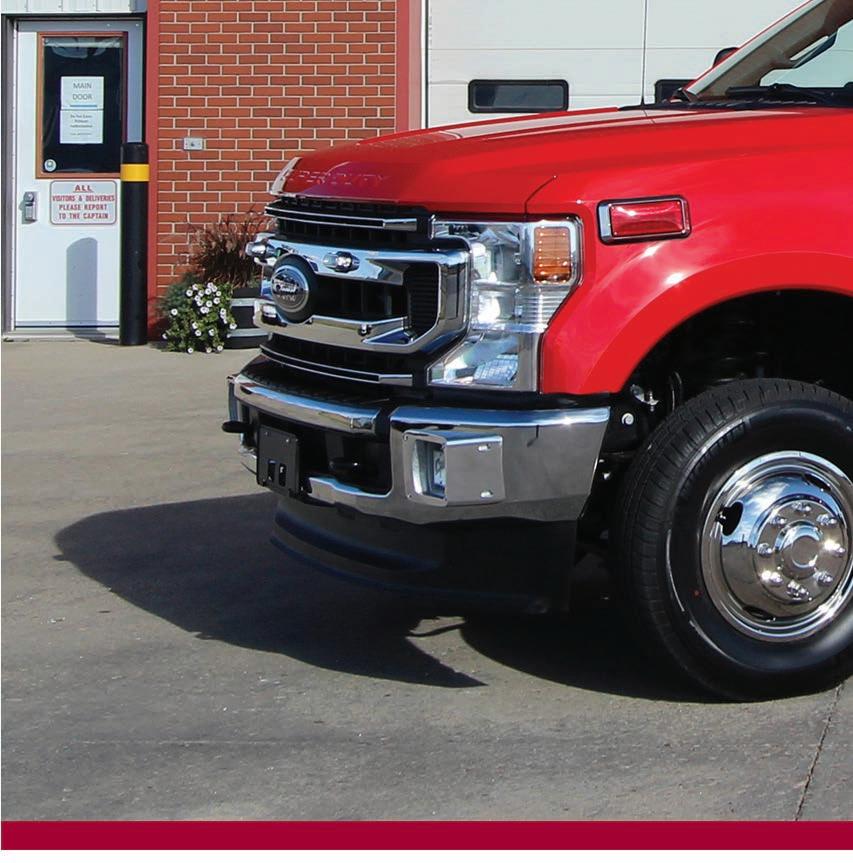
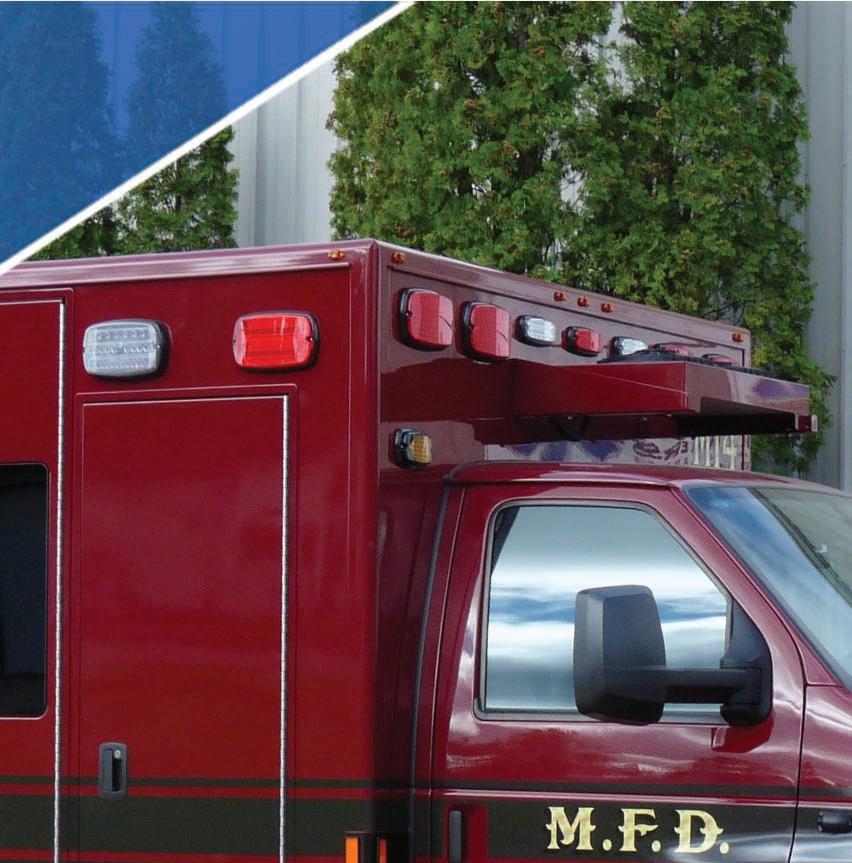
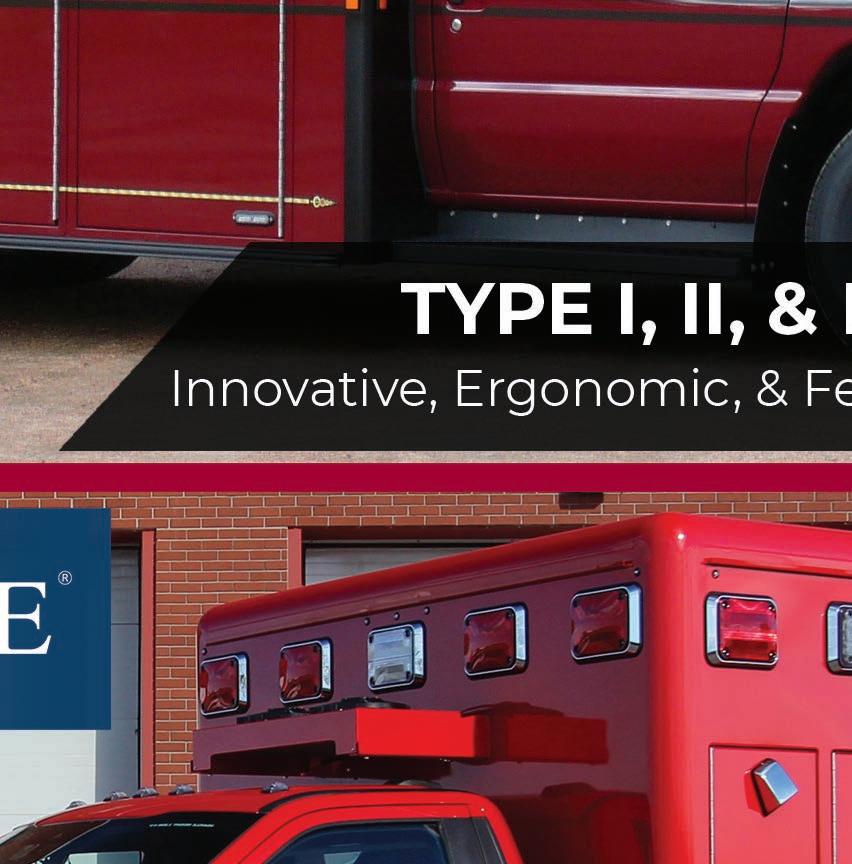

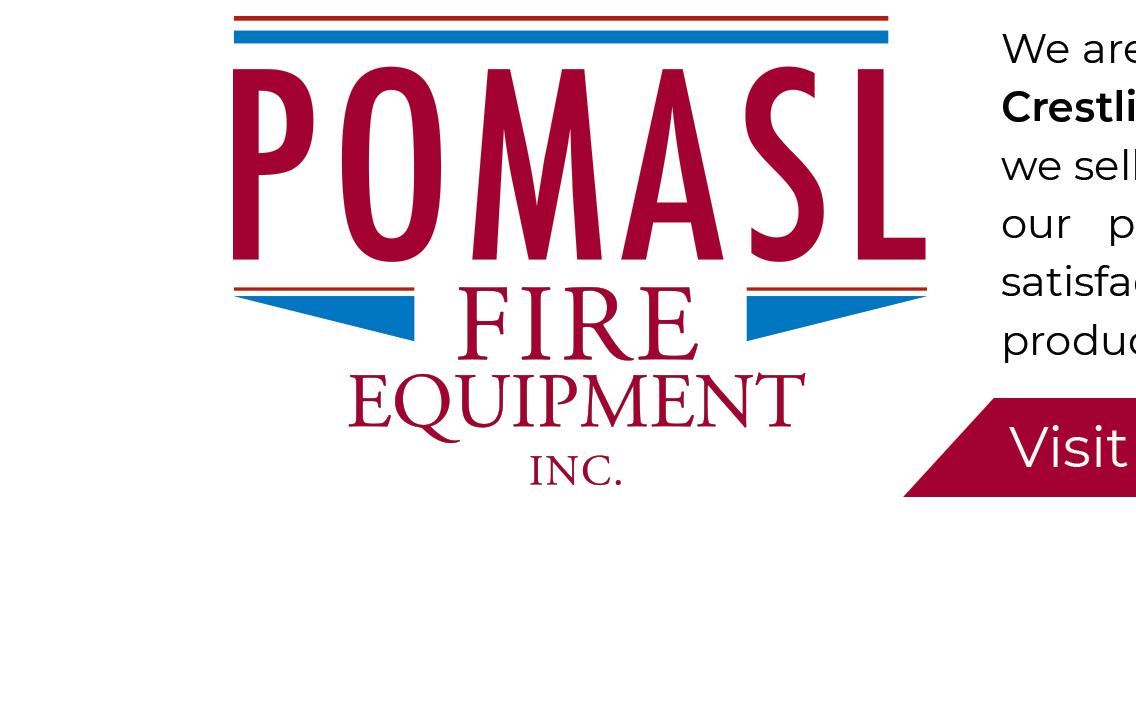


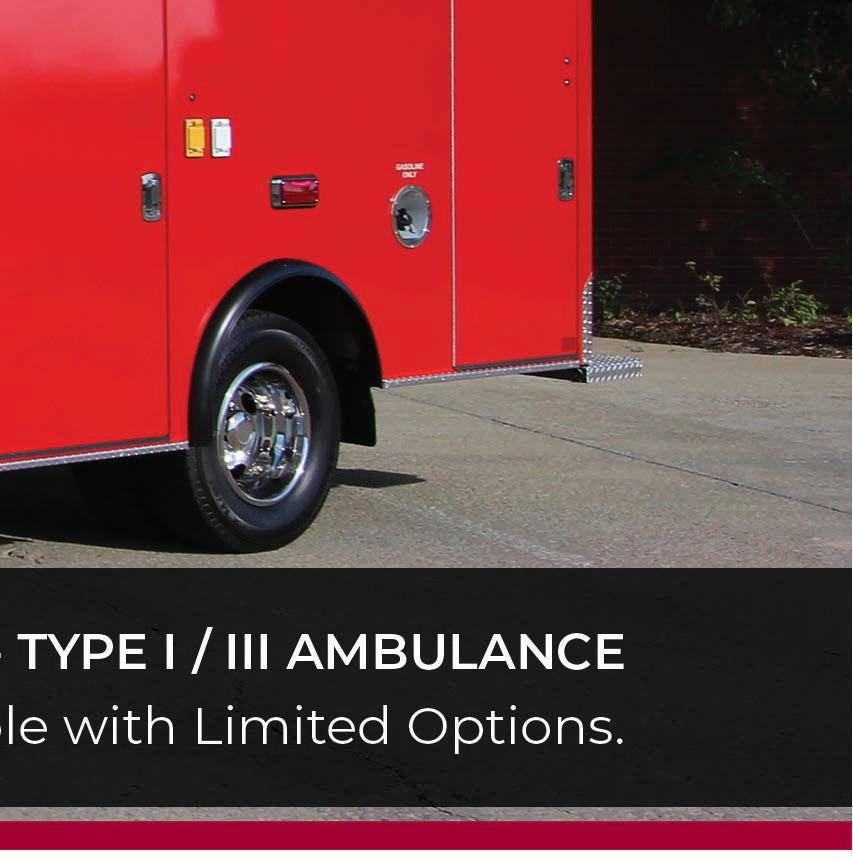



As we continue to deliver valuable information through the pages of this magazine, in a printed format that is appealing, reader-friendly and not lost in the proliferation of electronic messages that are bombarding our senses, we are also well aware of the need to be respectful of our environment. That is why we are committed to publishing the magazine in the most environmentally-friendly process possible.
HERE IS WHAT WE MEAN:
• We use lighter publication stock that consists of recycled paper. This paper has been certified to meet the environmental and social standards of the Forest Stewardship Council® (FSC®) and comes from responsibly managed forests, and verified recycled sources making this a RENEWABLE and SUSTAINABLE resource.
• Our computer-to-plate technology reduces the amount of chemistry required to create plates for the printing process. The resulting chemistry is neutralized to the extent that it can be safely discharged to the drain.
• During the printing process, we use a solvent recycling system that separates the water from the recovered solvents and leaves only about 5% residue. This results in reduced solvent usage, handling and hazardous hauling.
• We ensure that an efficient recycling program is used for all printing plates and all waste paper.
• Within the pages of each issue, we actively encourage our readers to REUSE and RECYCLE.
• In order to reduce our carbon footprint on the planet, we utilize a carbon offset program in conjunction with any air travel we undertake related to our publishing responsibilities for the magazine.
• We use vegetable oil-based inks to print the magazine. This means that we are not using resource-depleting petroleumbased ink products and that the subsequent recycling of the paper in this magazine is much more environment friendly. So enjoy this magazine... and keep thinking green.

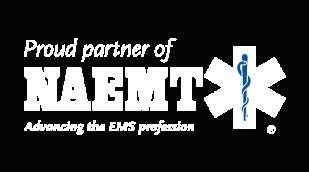


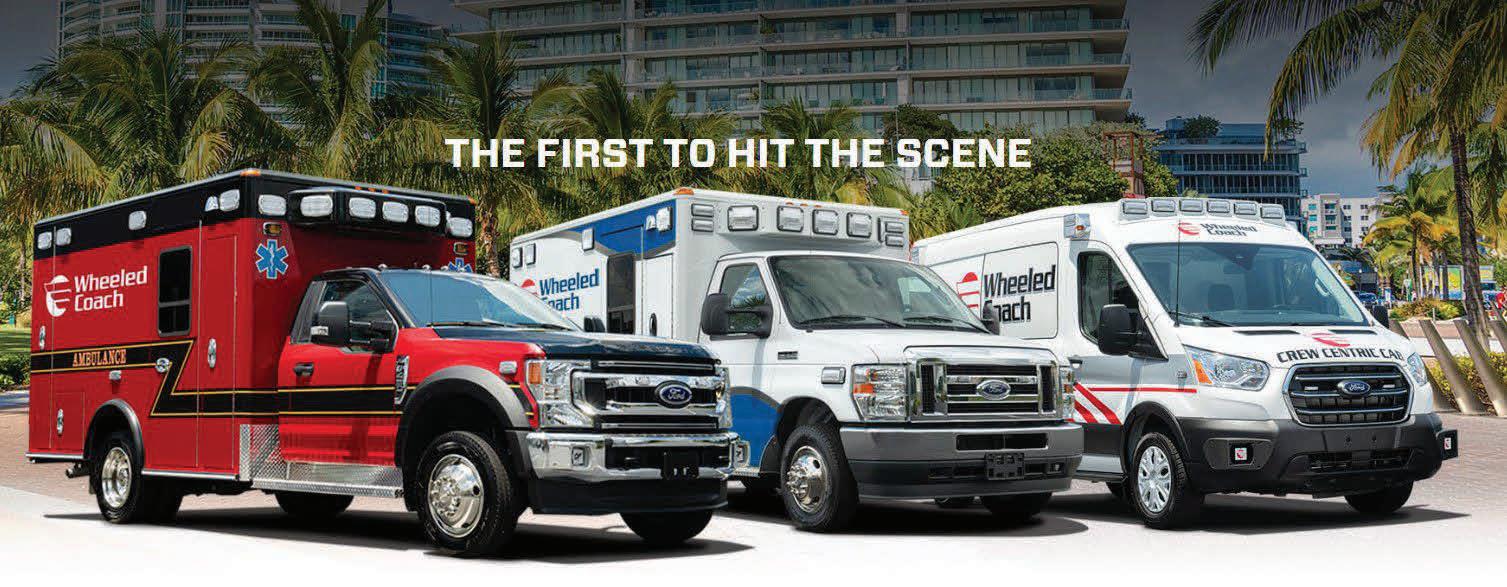
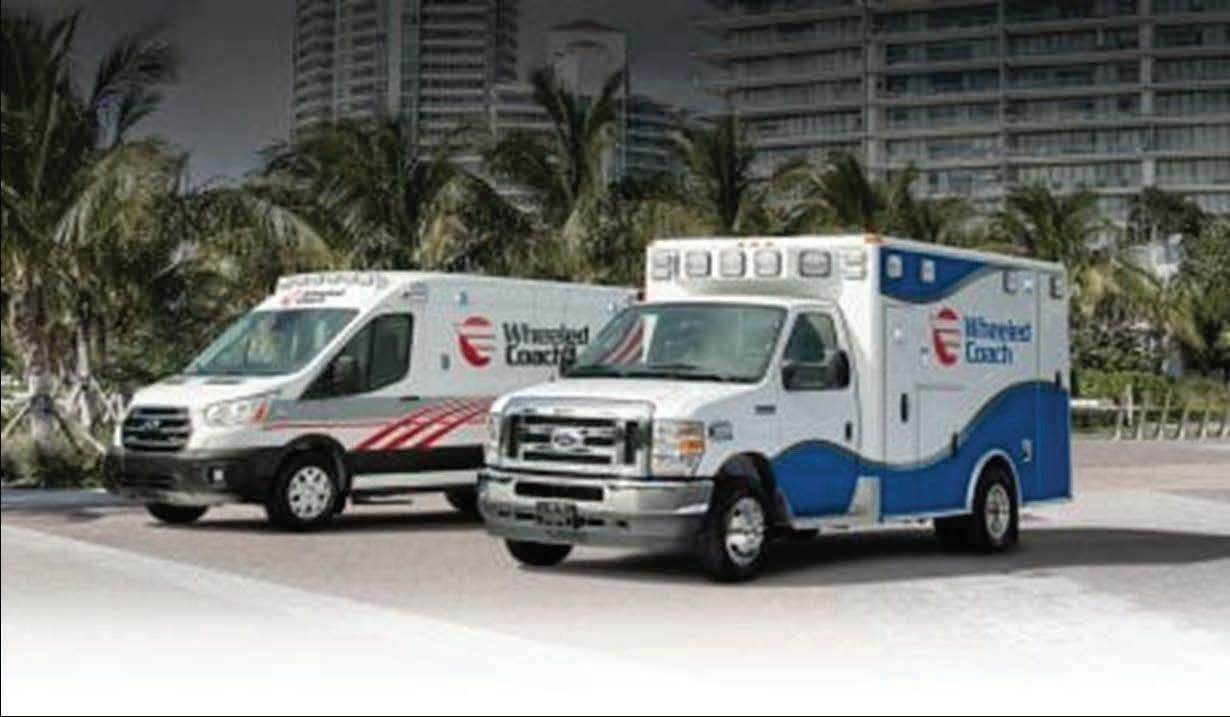
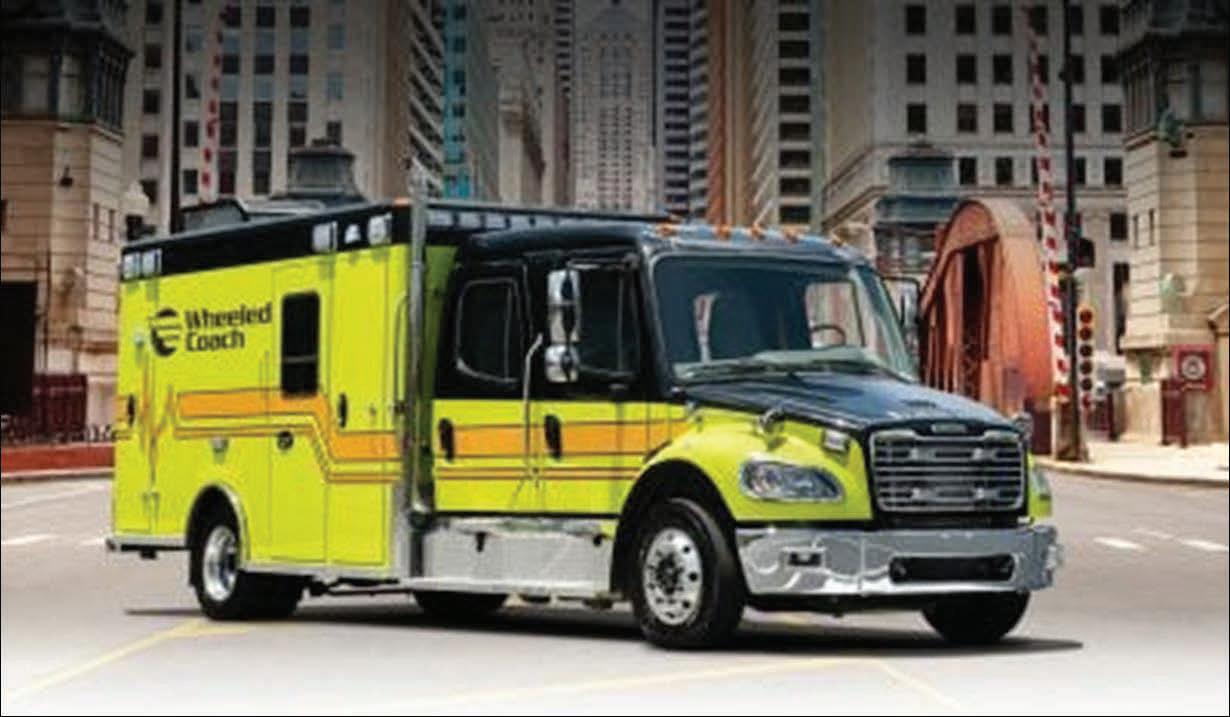


Scott Moore, Esq., Moore EMS Consulting, LLC
President Donald Trump issued an executive order titled “ Continuing the Reduction of the Federal Bureaucracy ,” which aimed to reduce the size of the federal bureaucracy. This order targeted several agencies, including the Federal Mediation and Conciliation Service (FMCS) , instructing them to eliminate non-statutory functions and minimize statutory operations to the extent permitted by law. The order provided each agency head seven (7) days to notify the Office of Management & Budget (OMB) of compliance with this order.
Established in 1947, the FMCS has played a critical role in mediating labor disputes across both private and public sectors. By facilitating negotiations and preventing work stoppages, the agency has been instrumental in saving the US economy over $500 million annually. The FMCS does this by facilitating disputes between employers and unions at no cost.
Following the executive order, the FMCS has significantly reduced its workforce, retaining only a "skeleton crew" of approximately a dozen employees. This downsizing has led to the cessation of most mediation services, with the remaining staff focusing solely on functions mandated by statute.
The reduction of FMCS services poses several challenges for employers:
1. Increased Risk of Prolonged Labor Disputes: Without FMCS mediators to facilitate negotiations, employers may face longer and more contentious

labor disputes, potentially leading to costly work stoppages.
2. Higher Costs for Private Mediation:
Employers seeking to resolve disputes may need to engage private mediators, which can be significantly more expensive than the services previously provided by the FMCS.
3. Compliance Obligations Remain:
Despite the reduction in FMCS operations, employers are still required to adhere to statutory obligations, such as filing notices under Sections 8(d) and 8(g) of the National Labor Relations Act.
Unions have expressed strong opposition to President Donald
Trump's executive order. The FMCS has played a critical role in mediating labor disputes and facilitating collective bargaining agreements between employers and workers. The dismantling of the FMCS underscores a broader effort by the Trump Administration to reduce the federal workforce. Unions and employers fear the potentially far-reaching implications for labor relations and the economy. We will continue to keep our members advised about these changes and consider alternative strategies to navigate this rapidly evolving landscape. If you have questions, please contact smoore@wmklawgroup.com

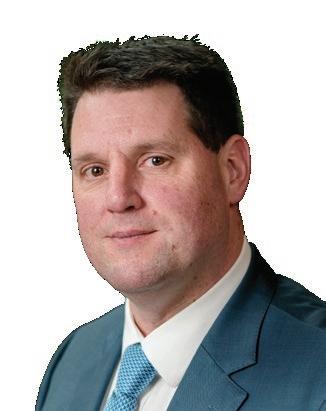
James Small, Rural EMS Outreach Program Manager, Wisconsin Office of Rural Health
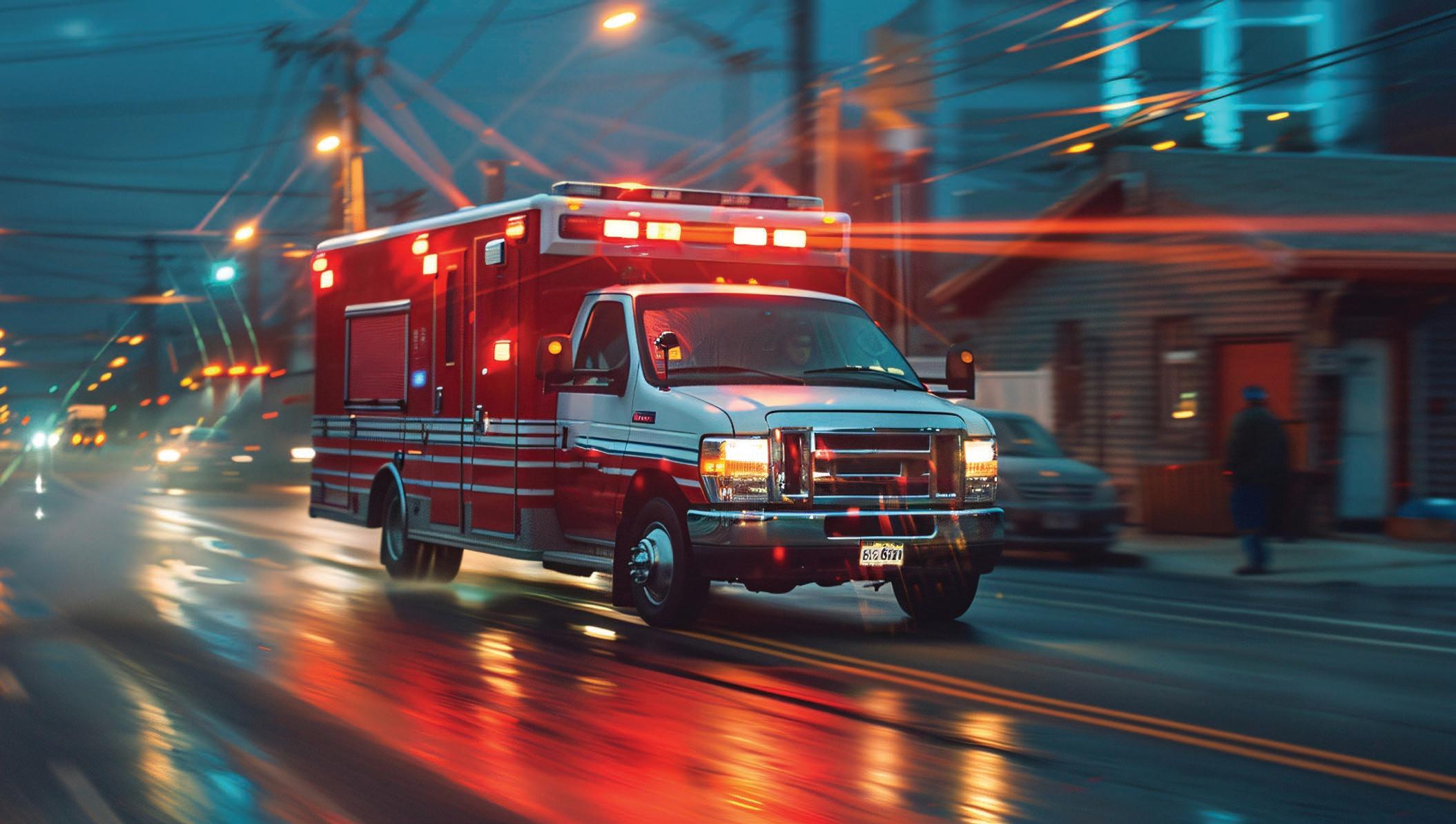
Isaw it, I looked again, and it was gone.
I remember the first time I saw something I had previously seen in a critical incident. I knew the vision of a terribly injured person wasn’t real. And then over the next several years, I saw it again and again and again. I worried I was crazy. I feared if I told someone I would be pushed away and found to be unfit for duty. This was just one of the many symptoms I was experiencing after a couple of decades as an emergency responder left me no longer able to control what my body was experiencing. I felt completely alone and detached and my soul burned with anxiety. I slept a few hours a night and I felt the
most “normal” during high-adrenaline emergency responses. Each morning, I got up and threw myself into working and finding things to be productive to prove that I was fine. Excessive working became my maladaptive coping skill. I didn’t want to admit I wasn’t fine. My unwillingness to acknowledge what my body was telling me was destroying me.
Fortunately, I attended a training taught by Dan Willis who wrote The Bulletproof Spirit, a book about the impacts of critical incident stress on emergency responders. I spent eight hours listening to Dan talk about all the things I was experiencing. I learned that these things I was experiencing were
normal and I didn’t need to feel shame that I couldn’t manage them on my own anymore. Dan suggested that responders seek out a counselor who can perform Eye Movement Desensitization and Reprocessing (EMDR) which is a treatment that helps process and resolve traumatic memories and experiences. I left that training and reached out to a friend who was a counselor, and he suggested someone he thought would be a good fit for me. In late 2016 I walked into Bill’s office for the first time. I followed Bill’s advice and actively participated in EMDR sessions with him. EMDR was a challenging process, but worth the effort. Over time three sessions a week
turned into twice a week, and now I see him every month. I found myself feeling normal again. Initially, I still felt a stigma and hid that I was getting treatment from many of my friends and co-workers.
The first time I spoke publicly about my experience was testifying in favor of the PTSD worker’s compensation legislation in the Wisconsin Assembly in early 2020. Since then, I have learned that my experiences are shared by most other responders, and I can speak freely without feeling stigmatized.
My only regret was waiting so long to seek treatment. I was experiencing the impacts of critical incident exposures for at least 15 years before that and ignoring them. Rather than being a risk to my career, seeking treatment helped me become a better leader, emergency responder and most importantly, a better husband and father.
I wonder how different EMS would be today if we had been taught about critical incident stress and resilience beginning when we became emergency responders. We can improve our approach to resiliency by prioritizing building solutions into the culture of our agencies.
The idea of emergency responder wellness is quickly gaining traction in EMS and requires prioritization. Where just a decade ago it was taboo for us to discuss the impacts of our experiences, we are quickly improving our approach to supporting our wellness and making it acceptable to admit when we are not fine. It is no longer acceptable to expect someone to “just suck it up” or “figure it out.”
A challenge we face in this evolution is how to create a culture of wellness in our agencies. Many responders (who are now in leadership roles) were taught nothing about the need for wellness strategies and developing these much-needed changes can feel insurmountable. One of the frustrations is that each person has individual needs and effective solutions require multiple strategies rather than a single solution.
“I wonder how different EMS would be today if we had been taught about critical incident stress and resilience beginning when we became emergency responders. We can improve our approach to resiliency by prioritizing building solutions into the culture of our agencies.”
Building a multi-faceted approach is not as daunting as it might appear.
There are several approaches many agencies are using in combination to incorporate employee wellness into agency culture:
1. Employee Assistance Programs (EAP). Employee Assistance programs are confidential services that employers offer to help employees with personal or work-related problems that impact job performance, health, or well-being. All Wisconsin fire departments are legally required to have an Employee Assistance Program for their members (SPS 330.16). EMS agencies are not required to provide this for employees.
There are many commercially available EAPs in Wisconsin, and they are available at very affordable rates. Typically, there is an annual fee based on the number of employees covered. These frequently include counseling sessions as a benefit.
A mistake that agencies commonly make with their EAP is they enroll their employees, hang the poster with the phone number on the wall and feel like the mission is accomplished. This type of implementation doesn’t work because no emergency responder will trust calling a random number off a poster on the wall.
A method that works to make EAP usable to the employee is to hold an annual training with all employees where a representative of the EAP comes in person and teaches the responders what services the programs can provide and
how it works to access the programs. Agencies that incorporate this type of training see higher utilization of services. Having an EAP with 0% utilization means that the agency is not reaching its members, not that the members don’t need the service.
In searching for a program, many hospital systems offer EAP services to area businesses. Most of these programs are very affordable.
Cost: $1,000 to $2,000 annually. TIP: Strategically FAP funds to create a budget margin that allows for funding EAP.
Wisconsin is experiencing a rapid expansion of the peer support model. These programs provide confidential and informal support from trained colleagues who understand the unique stressors of the job and can help navigate challenges and access resources.
Peer Support is growing because it works. Typically, a peer support team is either run internally in an agency including members of the agency or regionally like a county wide multiple agency team.
Wisconsin 2023 ACT 220 provides regulation of emergency responder peer support programs. These include rules for establishing teams, training programs for team members, and most importantly, establishing confidentiality in what has been discussed during the peer support process. This means a member of an authorized peer support team cannot be forced to provide information to others, such as a departmental discipline process, on what has been discussed.
Professional Firefighters of Wisconsin
Charitable Foundation is sponsoring peer support training in Wisconsin. Find a class near you at https://pffwcf.org/firefighter-support
Cost: $0-$250/person. Funding sources are sometimes available to pay for training and costs associated with attending such as lodging.
3. Focus on Internal Workplace Culture. Not surprisingly, internal workplace culture continues to consistently be a top stressor for emergency responders. We respond to calls where we are exposed to critical incident stressors and then return to a difficult workplace environment that acts as a force magnifier of those stressors. Recent studies have even identified agency culture and leadership as a risk factors in responders developing post-traumatic stress disorder.
As an industry, we excel at teaching people how to respond to emergencies and provide patient care. We provide essentially no training on being part of a team. We ignore topics like civility, teamwork, and conflict resolution. We focus so much energy on street skills that we spend no time developing soft skills. Then we can’t understand why we have difficulty with things like employee retention. Numerous studies show training in life skills improves team performance (and patient outcomes) more than training together on our street skills.
A simple training plan to incorporate these discussions into your agency might include watching a TED talk on one of these topics and then having a group discussion among the staff on how the ideas can be incorporated into your workplace.
Start with Christine Porath’s “Why being respectful to your coworkers is good for business.” This is a 15-minute video that explains the impacts of incivility on individual performance. Have everyone watch this in a group and then discuss how each employee can bring these ideas into the workplace. Find this video at https://
www.ted.com/talks/christine_porath_ why_being_respectful_to_your_ coworkers_is_good_for_business
Culture change is a long-term process and will require ongoing reinforcement but when it takes hold is highly engaging to responders.
As a chief, one of my best memories came a few months into incorporating workplace culture training into the training plan. There was typical shop talk happening before training started and someone said something sarcastic. Another employee immediately pointed out, “Hey that’s incivility!” Everyone laughed and the cultural changes continued to be reinforced for the better.
Cost: $0.
These are just three of many options available to help build a resilient culture in our agencies. It is critically important to openly discuss these options and others. No option is perfect, but adopting a process that incorporates multiple approaches will ensure better support for our responders.
Each of us needs to be willing, to be honest with ourselves about the impact
of critical incident stress on our own lives and be willing to ask for help. It should no longer be a part of our culture to keep sucking it up and saying we’re fine. Building a resilient culture in our agencies helps each of us maintain a healthy relationship with our roles as emergency responders.
Value of building a culture of resilience in your agency: Priceless
We assist communities across Wisconsin with developing and implementing solutions to EMS reliability and sustainability challenges. We provide technical assistance that can help local governments and EMS agencies better support their community’s EMS responders. All services are provided by the Wisconsin Office of Rural Health at no cost. We can help with planning and implementing wellness programs in your agencies.
To contact the Wisconsin Office of Rural Health: James Small Rural EMS Outreach Program Manager small5@wisc.edu
• USB-C rechargeable
• Durable Clip
• Battery Charging indicator
• Anodized aircraft-grade aluminum
• Water and impact-resistant (IPX4)
• Powerful magnetic base BATTERIES
•


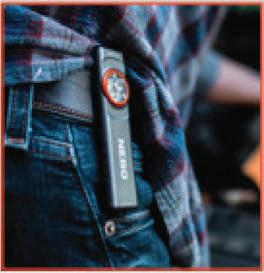
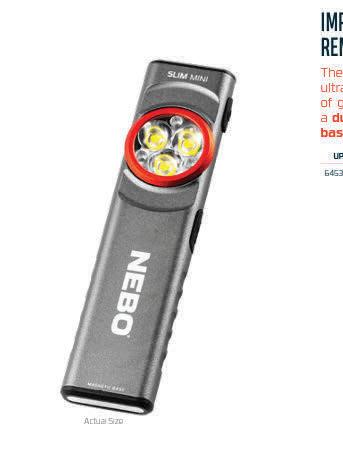


Adell First Responders
Albany Area Emergency Medical Service
Algoma Fire & Rescue
Allenton Volunteer Fire Department
Alma Center First Responders
Altoona Fire and Rescue
Ambulnz by DocGo
Amherst Fire District
Antioch Fire Department
Apple Canyon Lake Safety and Security
Arcadia Ambulance Service
Arena Emergency Medical Services
Argyle Emergency Medical Service
Arlington Emergency Medical Service
Ashippun Fire Department
Ashland Fire Department
Ashwaubenon Department of Public Safety
Aspirus Wausau Hospital Medevac
Athens Area Ambulance Service
Baldwin Ambulance Service
Baraboo District Ambulance Service
Barnes Ambulance Service
Barneveld Area Rescue Squad
Beacon Ambulance Service
Beaver Dam Fire Department
Belgium Rescue Squad First Responders
Belleville Exeter & Montrose Fire & EMS
District
Belmont Ambulance Service
Berlin Emergency Medical Service
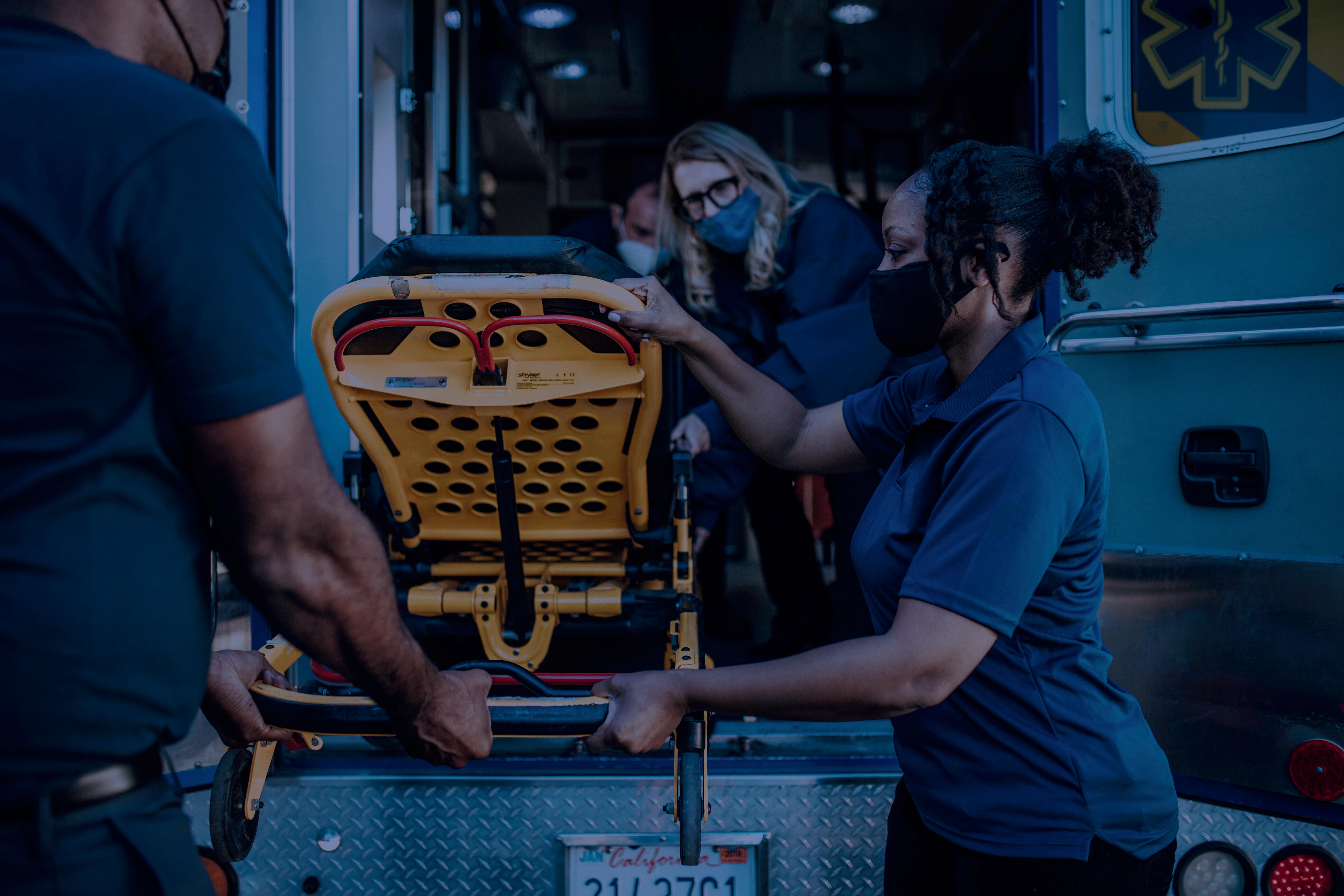
Birchwood Four Corner Emergency Services District
Biron VFD First Responders
Black River Falls Emergency Medical Service
Blanchardville Fire Department
Bloomer Area First Responders
Bloomer Community Ambulance Service
Bloomfield Genoa City Fire & Rescue
Blue River Volunteer Rescue Squad
Boscobel Rescue Squad
Boyceville Community Ambulance District
Boyd Edson Delmar Fire Department
Ambulance
Brodhead Area EMS
Burnett First Responders
Butternut Fire Department EMS
Cambria Community Ambulance Service
Cambridge Area Emergency Medical Service
Campbellsport Volunteer Fire Department
Cascade First Responders
Cazenovia Area Rescue Squad
Cedar Grove Fire Department First Responders
Cedarburg Fire Department Rescue Squad
Central Fire and EMS District
Chetek Ambulance Service
Chippewa Falls Fire & Emergency Services
Chippewa Fire District
City of Antigo Fire Department
City of Beloit Fire Department
City of Brookfield Fire Department
City of Delavan Fire Department
City of Fond du Lac Fire/Rescue Department
City of Marinette Fire Department First
Responders
City of New Berlin Fire Department
City of Oconto Ambulance Service
City of Peshtigo Fire/Rescue Department
City of Reedsburg Ambulance
Clear Lake Ambulance Service
Cleveland First Responders
Clinton Fire Protection District- EMS
Community Ambulance Service
Conover Ambulance Service
Cornell Area Ambulance Service
County Rescue Service
Crandon Area Rescue Squad
Crivitz Rescue Squad
Cross Plains Area Emergency Medical Service
Cudahy Fire Department
Cumberland Memorial Hospital Ambulance Service
Curtis Universal Ambulance ServiceMilwaukee
Dallas Area Ambulance Service
De Pere Fire Rescue
Deer-Grove EMS District
Dells-Delton Emergency Medical Service
Dickeyville Rescue Squad


Dodgeville Area Ambulance Service
Door County Emergency Medical Service
Eau Claire Fire Department
Eden Fire Department First Responders
Elkhorn Fire Department, EMS Division
Ellsworth Area Ambulance Service
Elm Grove Emergency Medical Service
Elmwood Area Ambulance Service
Elroy Area Ambulance Association
Evansville Emergency Medical Service
Farmington Emergency Medical Team
Fennimore Area Rescue Squad
Fitch-Rona EMS District
Flight For Life Transport System
Florence County EMS
Footville Fire Department EMS
Fox Lake Fire Department
Franklin Fire Department
Freedom First Responders
Fremont-Wolf River EMS
Galesville Ettrick First Responders
Germantown Fire Department
Gillett Area Ambulance Service
Glen Haven Fire Department
Glenbeulah Fire Department First
Responders
Goodman Armstrong Rescue Squad
Gordon - Wascott Emergency Medical Service
Grafton Fire Department
Green Bay Metro Fire Department

Green County Emergency Medical Service
Green Lake/Brooklyn First Responders
Greendale Fire Department
Greenville First Responders
Greenwood Area Ambulance Service
Gundersen Air
Hales Corners Fire Department
Harrison First Responders
Hartford Fire & Rescue
Hartland Fire Department Rescue
Hatfield First Responders
Hatley Area Ambulance Service
Highland Ambulance Service
Hilbert/Potter First Responders
Hiles Volunteer Fire Department
Hillpoint First Responders
Hillsboro Area Ambulance Service
Hixton Area First Responders
Horicon Emergency Medical Services
Hortonville Emergency Medical Services
Howards Grove Fire Department First
Responders
Hustisford First Responders
Iola Ambulance Service
Iron Ridge First Responders
Jackson Fire Department
Jefferson Emergency Medical Service
Juneau Emergency Medical Service
Kansasville Fire & Rescue Department
Kaukauna Fire Department Ambulance Service

Kenosha Fire Department
Kettle Moraine Fire District
Kewaskum Fire Department
Kewaunee Area Ambulance Service
Kickapoo Valley Rescue Squad
Kronenwetter Fire Department First Responders
LaFarge Area Emergency Medical Service
Lafayette County EMS
Lake Country Fire And Rescue
Lake Mills Fire Department
Lakeview Emergency Medical Service
Lamartine Fire Department First Responders
Lancaster EMS
Land O Lakes Ambulance Service
Laona Rescue Unit
Lauderdale-LaGrange Fire Department
Lifestar Emergency Medical Service, LLC
Lodi Area Emergency Medical Service
Loganville First Responders
Loyal Ambulance Service
Luxemburg Emergency & Rescue Association
Madeline Island Ambulance Service
Maple Vol Fire Dept First Responders
Marengo Ambulance Service
Marquette County EMS
Mason Area Ambulance Service
Mauston Area Ambulance Association
Mayo Clinic Ambulance
Mayville Emergency Medical Service
McFarland Emergency Medical Service
Melrose First Responders
Menominee Tribal Ambulance Service
Menomonie Fire Department
Merrillan Fire Department First Responders
Merrimac Fire and Rescue First Responders
Merton Community Fire Department
Middleton Emergency Medical Service
Midwest Medical Transport Company, LLC
Mineral Point Rescue Squad
Mishicot Area Ambulance Service
Mondovi Ambulance Service
Monona Emergency Medical Service
Montfort Rescue Squad
Monticello Fire and Rescue
Mount Horeb Area Joint Fire Department
Mountain Ambulance Service
Mukwonago Fire Department
Muscoda Rescue Squad
Neillsville Municipal Ambulance Service
New Glarus Area Emergency Medical Service
New Holstein First Responders
New Richmond Area Ambulance & Rescue
Newburg Fire Department Ambulance
Newton First Responders
North Crawford Rescue Squad
North Fond du Lac Fire & EMS Department
North Freedom Fire Department
North Park Fire Protection District
Northern Door First Responders


Northwest First Responders
Northwestern Municipal EMS
Northwoods EMS District
Oakfield Emergency Medical Responders
Oconto Falls Area Joint Ambulance Service
Ocooch Mountain Rescue
Omro Rushford First Responders
Ontario Emergency Medical Service
Osceola Area Ambulance Service
Osseo Rural FD First Responders
Owen-Withee-Curtiss Fire and EMS District
Pardeeville District Ambulance Service
Pelican Fire Rescue
Pembine-Dunbar-Beecher Rescue Squad
Pepin Emergency Ambulance Service
Phelps Area Emergency Medical Service
Pickerel Volunteer Fire & Rescue Squad
Pittsville Fire Department
Plain Fire Emergency Protection District
Pleasant Prairie Fire & Rescue
Plum Lake Ambulance Service
Port Washington Fire Department
Ambulance
Portage County / Stevens Point Fire
Department
Portage County Emergency Medical
Services
Portage Fire Department
Potosi Rescue Squad
Poy Sippi Volunteer Fire Department
Poynette Dekorra EMS
Presque Isle Volunteer Fire Department
Racine Fire Department
Randolph Ambulance Association
Random Lake Fire Department Ambulance
Readstown Emergency Medical Service
Reedsville First Responders
Richfield Volunteer Fire Company
Ripon Guardian Ambulance Service
Rochester Volunteer Fire Department
Rosholt Area First Responders
Rudolph Fire Department
Rusk County Ambulance Service
Sauk Prairie Ambulance Association
Saukville Ambulance
Sawyer County Ambulance
Scenic Valley Emergency Medical Service
Seymour Rescue Squad
Shawano Ambulance Service
Shullsburg Ambulance Service
Silver Cliff Rescue Squad
Solon Springs Vol FD First Responders
Somerset Fire and Rescue First Responders
South Area Fire and Emergency Response
District
South Milwaukee Fire Department
South Shore Area Ambulance Service
South Shore Consolidated Fire Department
Southern Green Lake County Ambulance Service
Southwest Health Emergency Medical Service


Spring Green Fire Protection District
Spring Valley Area Ambulance
St. Francis Fire Department
Stoughton Area Emergency Medical Service
Strum Unity Rescue First Responders
Superior Air Ground Ambulance Service
Taylor Fire & Rescue First Responders
Theresa Ambulance Service
Tichigan Volunteer Fire Company
Tigerton Area Ambulance Service
Association
Tomah Area Ambulance Service
Tomah Area Medical Responders
Town of Algoma First Responders
Town of Beloit Fire Department
Town of Brazeau Ambulance
Town of Fond Du Lac Emergency Medical Responders
Town of Ixonia Emergency Medical Service
Town of Norway Fire Department
Town of Oshkosh First Responders
Town of Saratoga EMS-First Responders
Town of Scott Emergency Medical Responders
Town of Sharon EMS
Town of Sheboygan Fire Department
Town of Sherman First Responders
Town of Wilson First Responders
Trempealeau Fire Department First Responders
Tri State Regional Ambulance
Twin Lakes Volunteer Fire Department & Rescue Squad
Union Grove-Yorkville Fire Department
United Emergency Medical Response
Utica First Responders
Village of Howard Fire Department
Village of Menomonee Falls Fire Department
Village of Plover Fire Department
Village of Salem Lakes Fire & Rescue
Village of Suamico Fire Department
Village of Waukesha Fire Department
Village of Wilton Ambulance Service
Wabasha Ambulance Service
Washburn Area Ambulance Service
Waterloo Fire Department
Watertown Fire Department
Waubeka Fire Department
Waumandee First Responders


Waunakee Area Emergency Medical Service
Waupun Fire & Rescue Department
Wausau Fire Department
Wausaukee Rescue Squad
Waushara County Emergency Medical Services
Wauwatosa Fire Department
West Grant Rescue Squad
Westby First Responders
Western Buffalo County Ambulance Service
Williams Bay Rescue Squad
Winchester Volunteer Ambulance Service
Wisconsin Rapids Fire Department
Wittenberg Area Protective Services
District
Woodboro First Responders

EMS Professionals® is made possible by the companies below who convey their important messages on our pages. We thank them for their support of the Wisconsin EMS Association and its publication and encourage you to contact them when making your purchasing decisions. To make it easier to contact these companies, we have included the page number of their advertisement, their phone number, and, where applicable, their website.

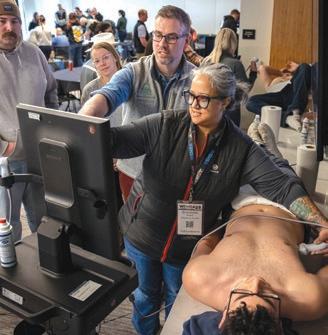
Professionals® magazine, please contact Jeff Kutny at your earliest convenience to discuss your company’s promotional plans.

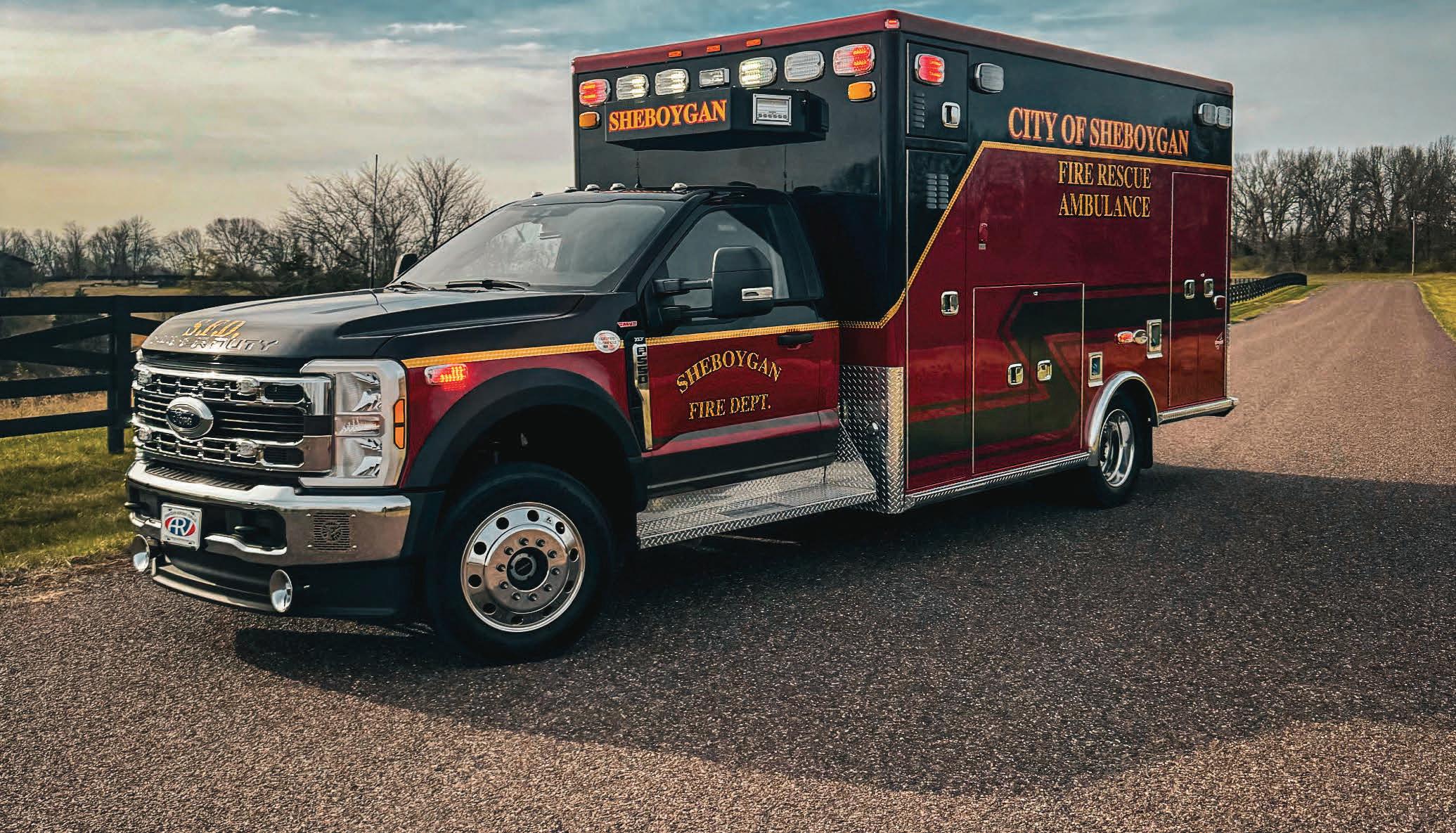



ARV AT A GLANCE
At ARV, we don’t just build ambulances; we build partnerships. Our commitment goes beyond the assembly line, ensuring your fleet is supported by the largest remount facility in the USA and a team that truly cares.
At ARV, we don’t just build ambulances; we build partnerships. Our commitment goes beyond the assembly line, ensuring your fleet is supported by the largest remount facility in the USA and a team that truly cares.
At ARV, we don’t just build ambulances; we build partnerships. Our commitment goes beyond the assembly line, ensuring your fleet is supported by the largest remount facility in the USA and a team that truly cares.
24+ Years of Service: The Nation’s Largest Ambulance only dealersip. Dedicated to serving EMS agencies for the long term.
24+ Years of Service: The Nation’s Largest Ambulance only dealersip. Dedicated to serving EMS agencies for the long term.
24+ Years of Service: The Nation’s Largest Ambulance only dealersip. Dedicated to serving EMS agencies for the long term.
When you choose ARV, you’re choosing reliability, innovation, and a partner who cares about your success. Our mission is to provide the best tools to help you save lives.
Extensive Coverage: Serving Kansas, Missouri, Illinois, Kentucky, Iowa, Indiana, Nebraska, Wisconsin, North Carolina, South Carolina, Tennessee, Virginia, West Virginia, Maryland
Extensive Coverage: Serving Kansas, Missouri, Illinois, Kentucky, Iowa, Indiana, Nebraska, Wisconsin, North Carolina, South Carolina, Tennessee, Virginia, West Virginia, Maryland
Extensive Coverage: Serving Kansas, Missouri, Illinois, Kentucky, Iowa, Indiana, Nebraska, Wisconsin, North Carolina, South Carolina, Tennessee, Virginia, West Virginia, Maryland
When you choose ARV, you’re choosing reliability, innovation, and a partner who cares about your success. Our mission is to provide the best tools to help you save lives.
When you choose ARV, you’re choosing reliability, innovation, and a partner who cares about your success. Our mission is to provide the best tools to help you save lives.
Multiple Service Locations: Strategically placed service centers across the region to ensure your fleet is always supported.
Multiple Service Locations: Strategically placed service centers across the region to ensure your fleet is always supported.
Multiple Service Locations: Strategically placed service centers across the region to ensure your fleet is always supported.
Main Characteristics
Main Characteristics
01 Product Excellence: Our ambulances exceed the highest safety standards, built with care and tested to ensure trust in any emergency.
Advanced Remount Facility: Nestled in North Carolina, our high-tech facility is where innovation meets expertise, breathing new life into your fleet.
Advanced Remount Facility: Nestled in North Carolina, our high-tech facility is where innovation meets expertise, breathing new life into your fleet.
Advanced Remount Facility: Nestled in North Carolina, our high-tech facility is where innovation meets expertise, breathing new life into your fleet.
01 Product Excellence: Our ambulances exceed the highest safety standards, built with care and tested to ensure trust in any emergency.
01 Product Excellence: Our ambulances exceed the highest safety standards, built with care and tested to ensure trust in any emergency.
02 Custom Solutions: Every department is unique. We offer customizable solutions, tailored to enhance your team’s response.
02 Custom Solutions: Every department is unique. We offer customizable solutions, tailored to enhance your team’s response.
02 Custom Solutions: Every department is unique. We offer customizable solutions, tailored to enhance your team’s response.
03 Beyond Standard: Our fully welded, all-aluminum bodies withstand extreme forces, ensuring unmatched durability and safety.
03 Beyond Standard: Our fully welded, all-aluminum bodies withstand extreme forces, ensuring unmatched durability and safety.
03 Beyond Standard: Our fully welded, all-aluminum bodies withstand extreme forces, ensuring unmatched durability and safety.
04 First-Class Care: We provide ongoing support to keep your fleet running smoothly, because your mission is our mission.
04 First-Class Care: We provide ongoing support to keep your fleet running smoothly, because your mission is our mission.
04 First-Class Care: We provide ongoing support to keep your fleet running smoothly, because your mission is our mission.



Our automated medication dispensing system helps EMS providers cut costs and stay compliant with DEA and FDA regulations. With VN Cloud software and our range of smart vending machines and lockers, businesses ensure full accountability for medical supplies and narcotics.
• Staff Efficiency: Position medical supplies where they are needed for easy access
• Accountability: Cloud-managed access control rules and real-time activity tracking
• Cost Reduction: Reduce overstocking, waste, and administrative overhead
• Security: Store medical supplies securely in locked, tamper-resistant vending machines or smart lockers
• Time Savings: Automate replenishment to eliminate manual inventories and streamline reordering

